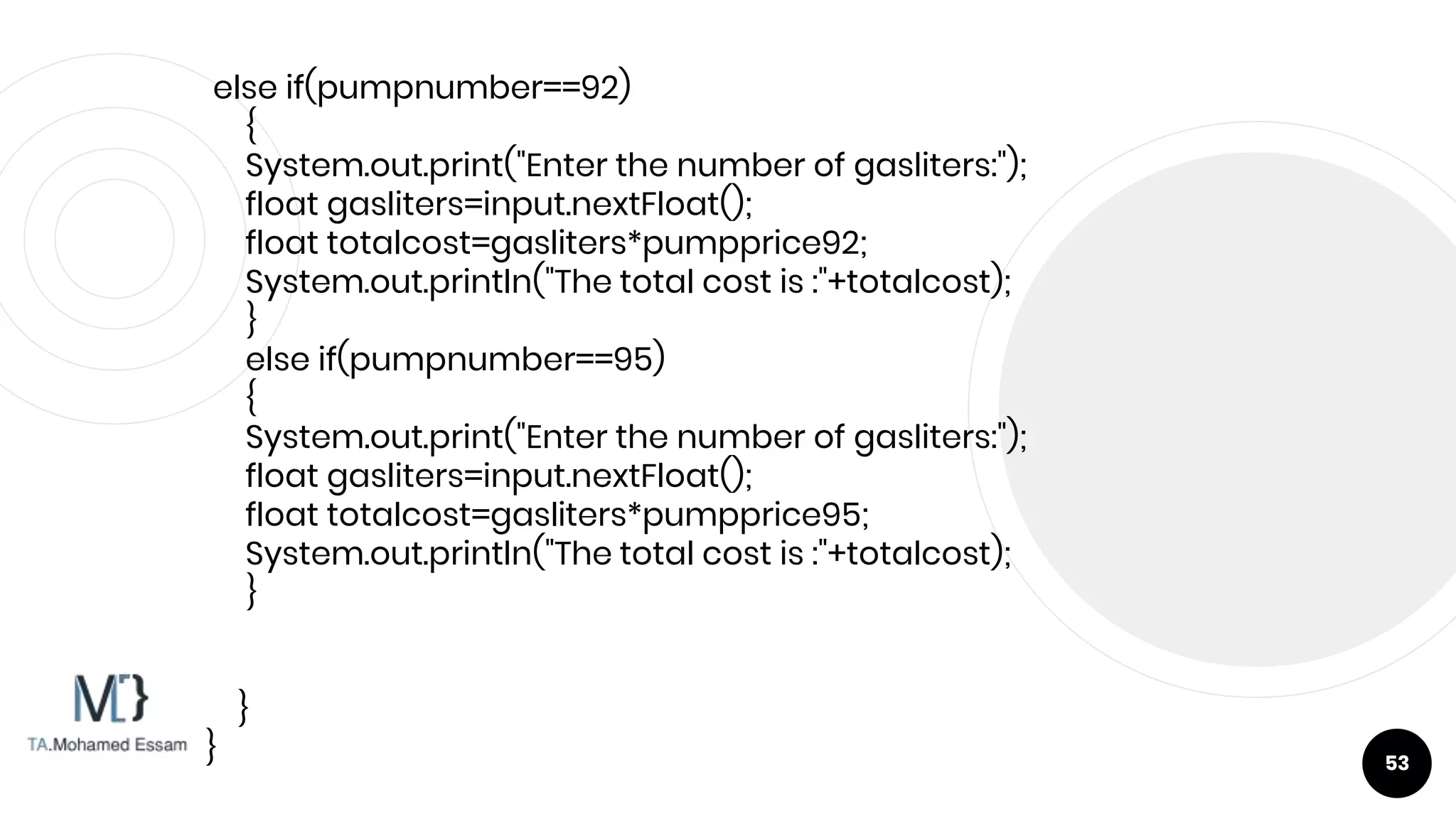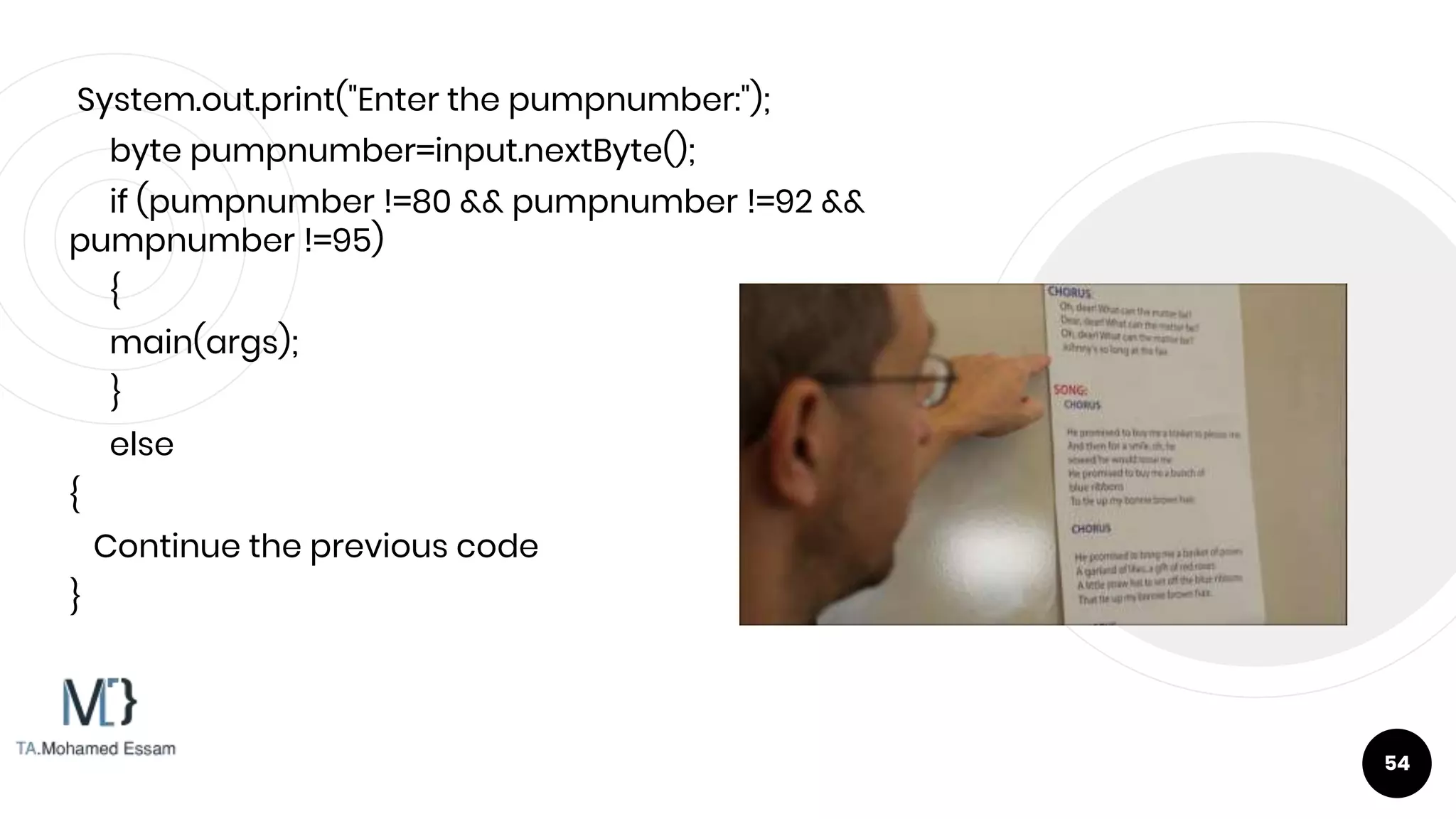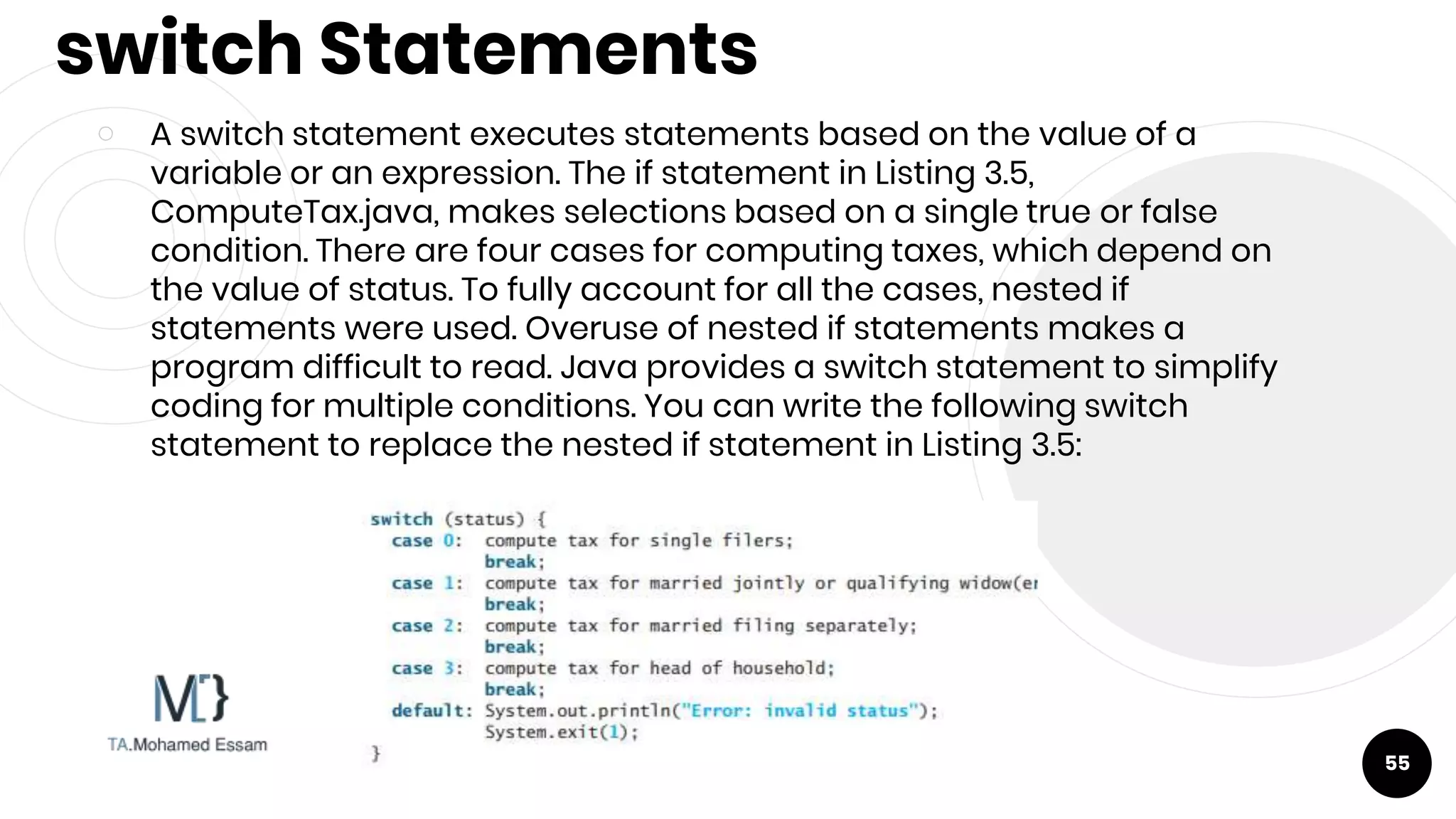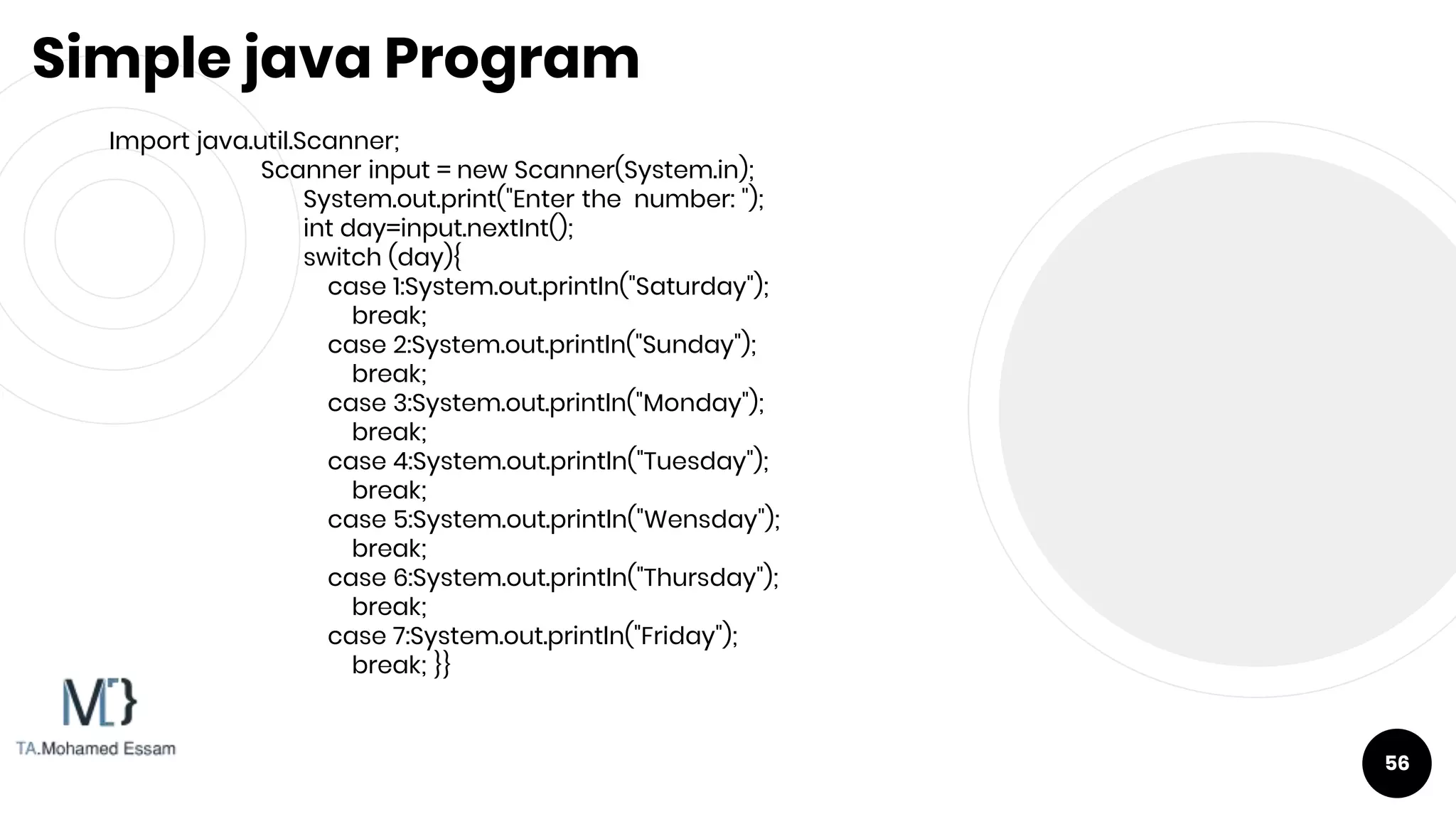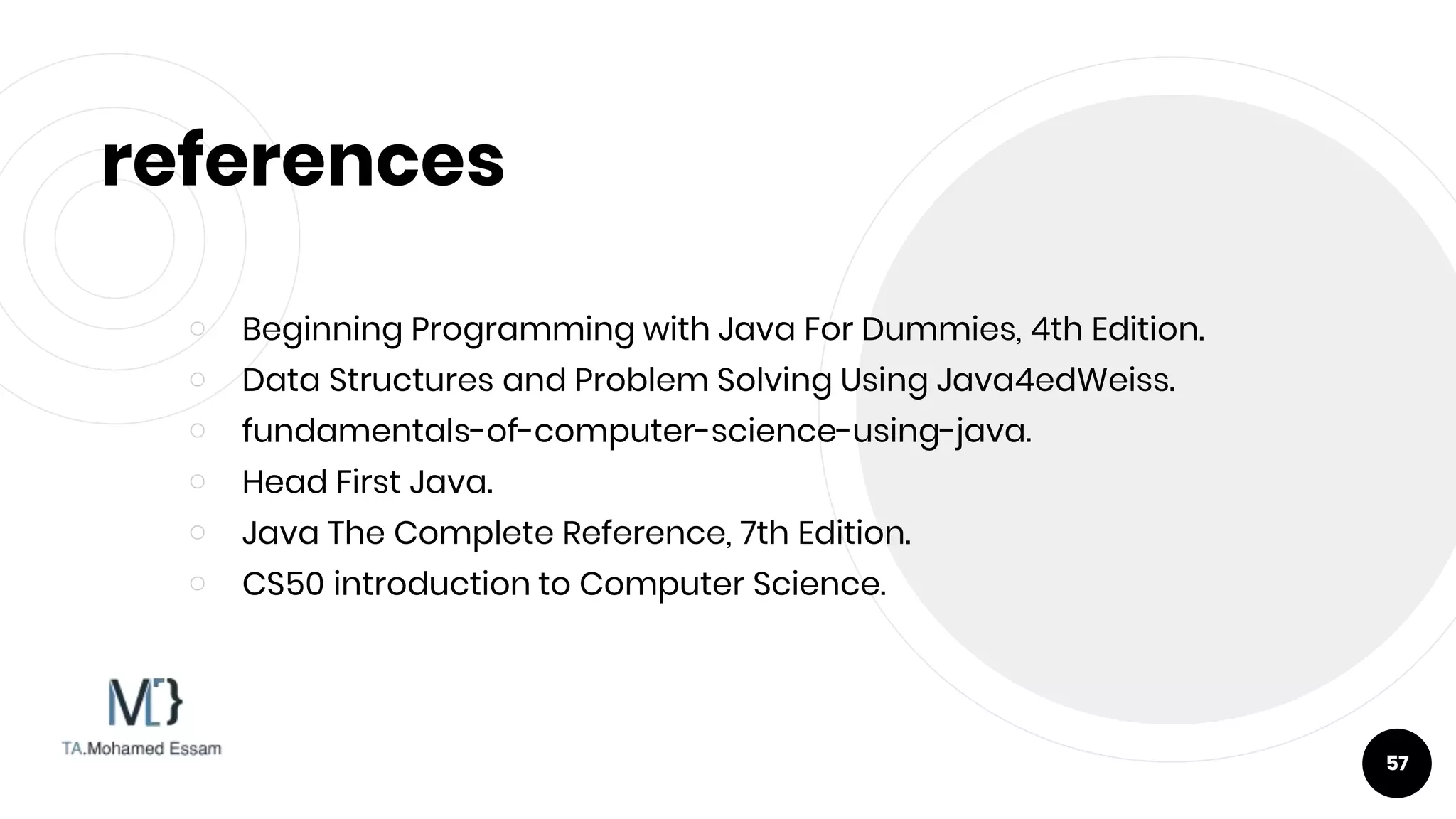This document provides an introduction to Java programming concepts including:
- A simple Java program that prints "Welcome to Java!" is presented to demonstrate a class, method, and output.
- Numeric operators, expressions, and performing mathematical computations in Java are explained.
- Common types of errors in programming like syntax errors, runtime errors, and logic errors are defined.
- Increment and decrement operators, augmented assignment operators, and if statements for conditional logic are described to illustrate basic programming constructs in Java.


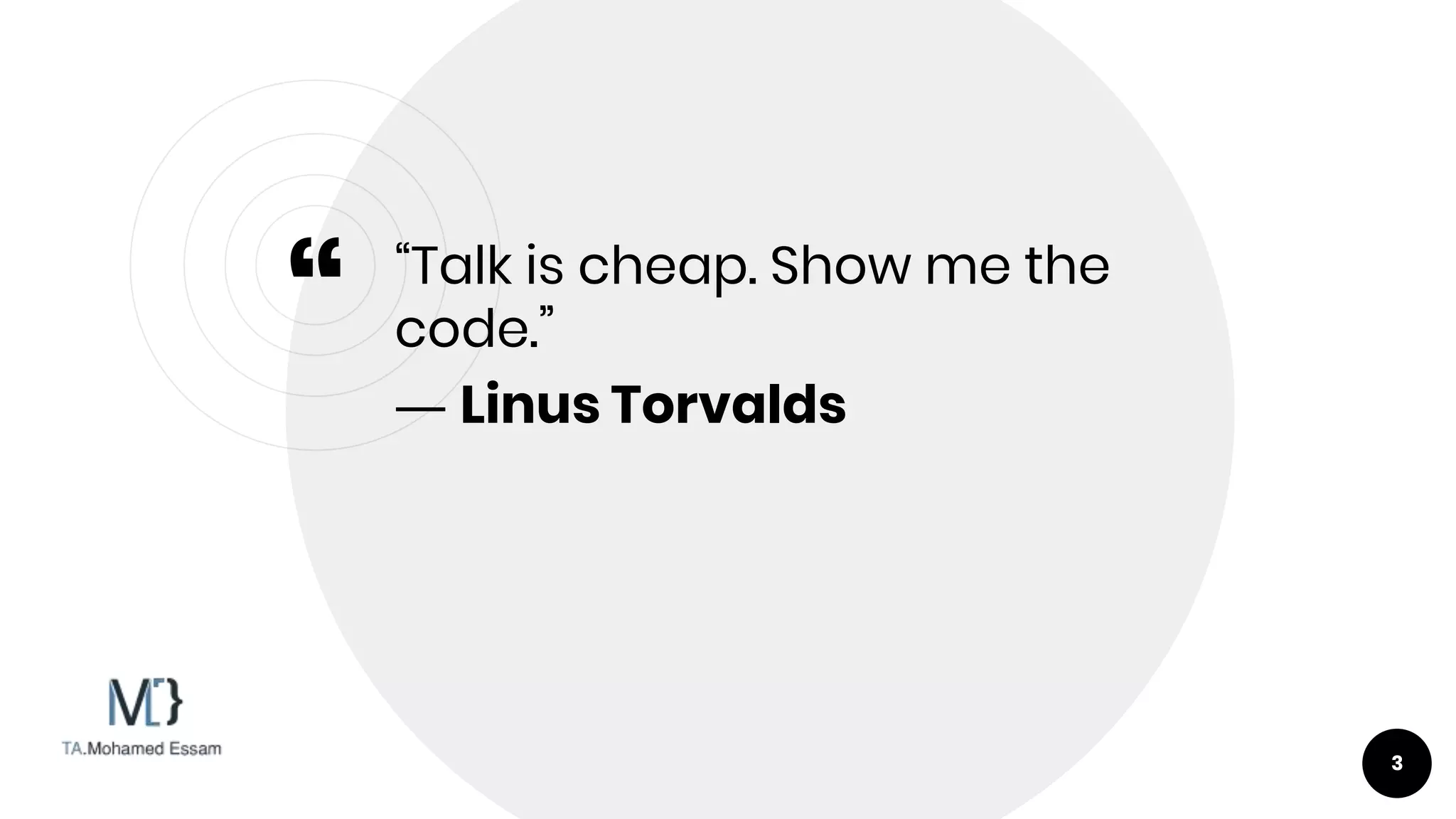

![Simple java Program
public class Welcome {
public static void main(String[] args) {
// Display message Welcome to Java! A class Block
System.out.println("Welcome to Java!"); a method block
}
}
5
Welcome to Java!
Output](https://image.slidesharecdn.com/section3-220323160745/75/Intro-to-programing-with-java-lecture-3-5-2048.jpg)
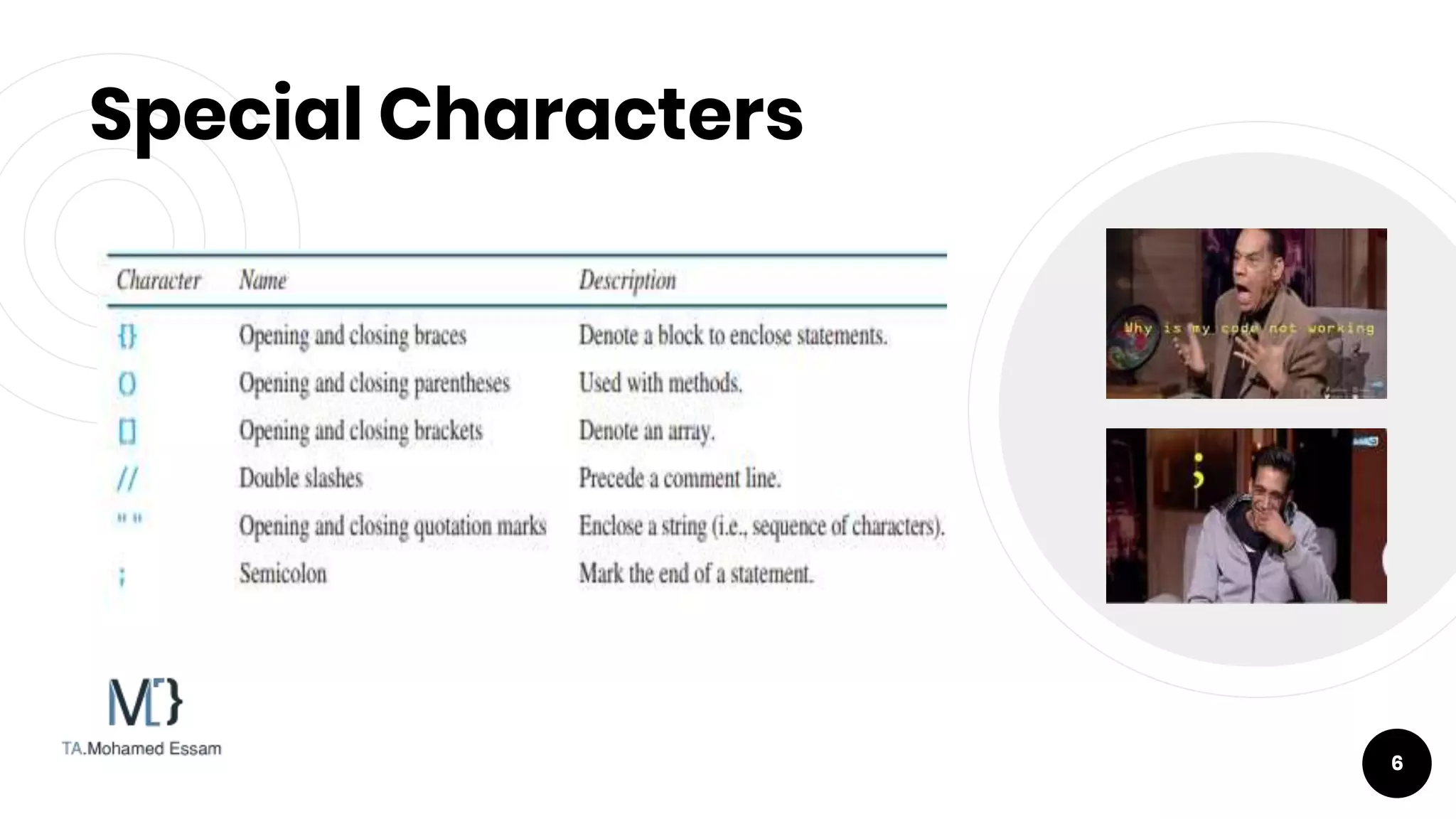
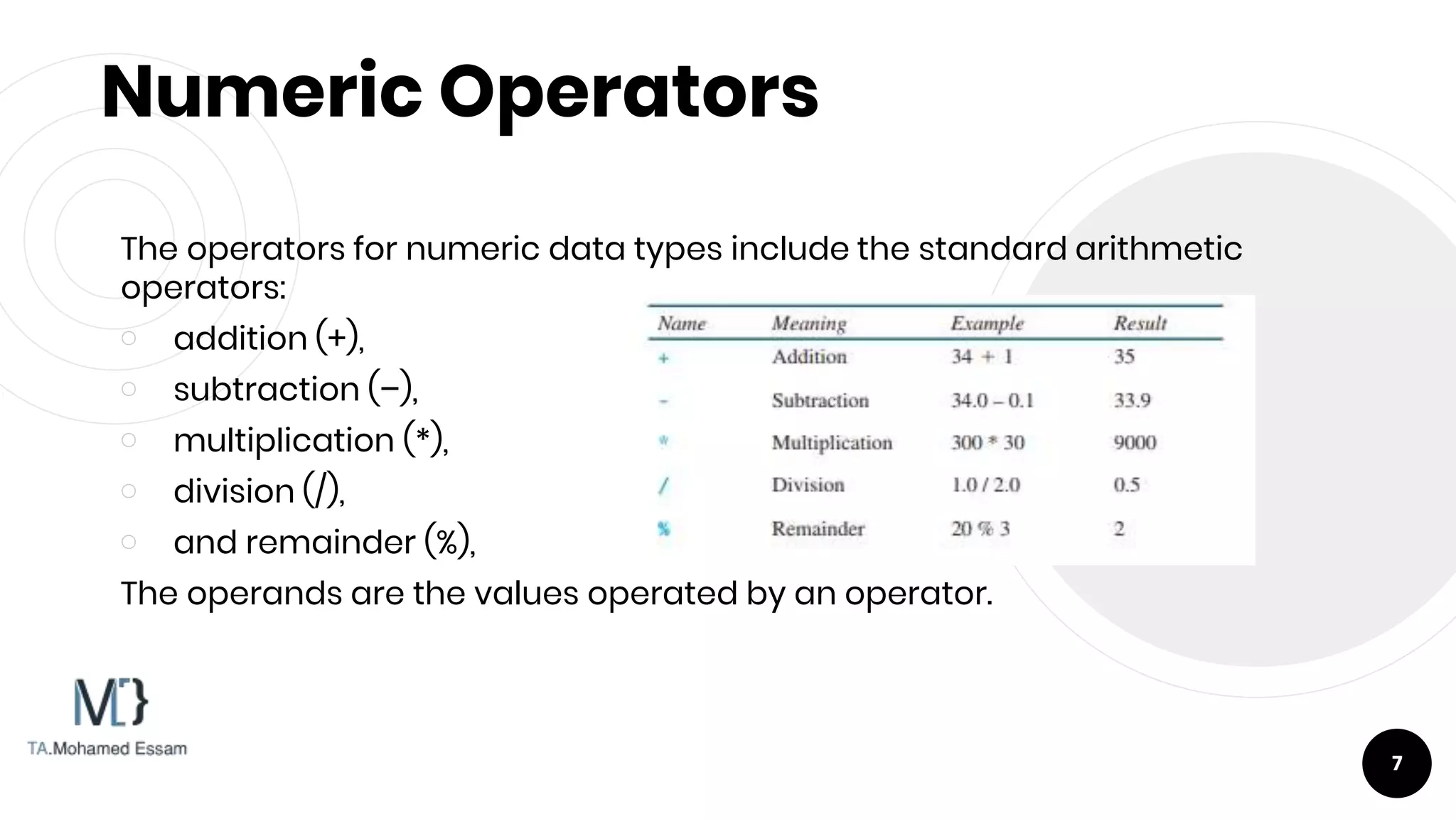
![perform mathematical
computations
○ Listing 1.3 gives an example of evaluating.
8
public class ComputeExpression
{ public static void main(String[] args)
{
System.out.println((10.5 + 2 * 3) / (45 – 3.5));
}
}
Output
0.39759036144578314](https://image.slidesharecdn.com/section3-220323160745/75/Intro-to-programing-with-java-lecture-3-8-2048.jpg)
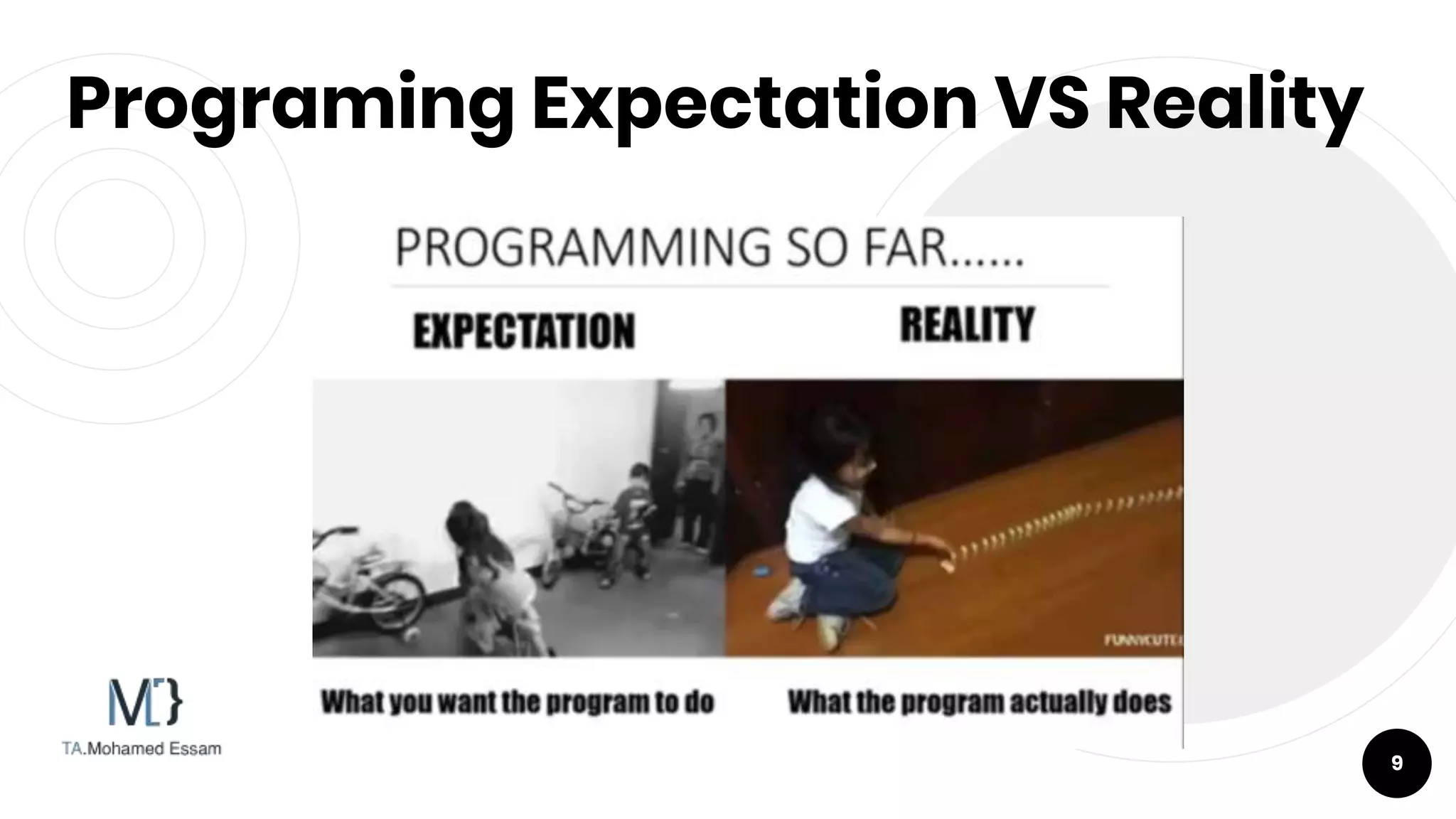
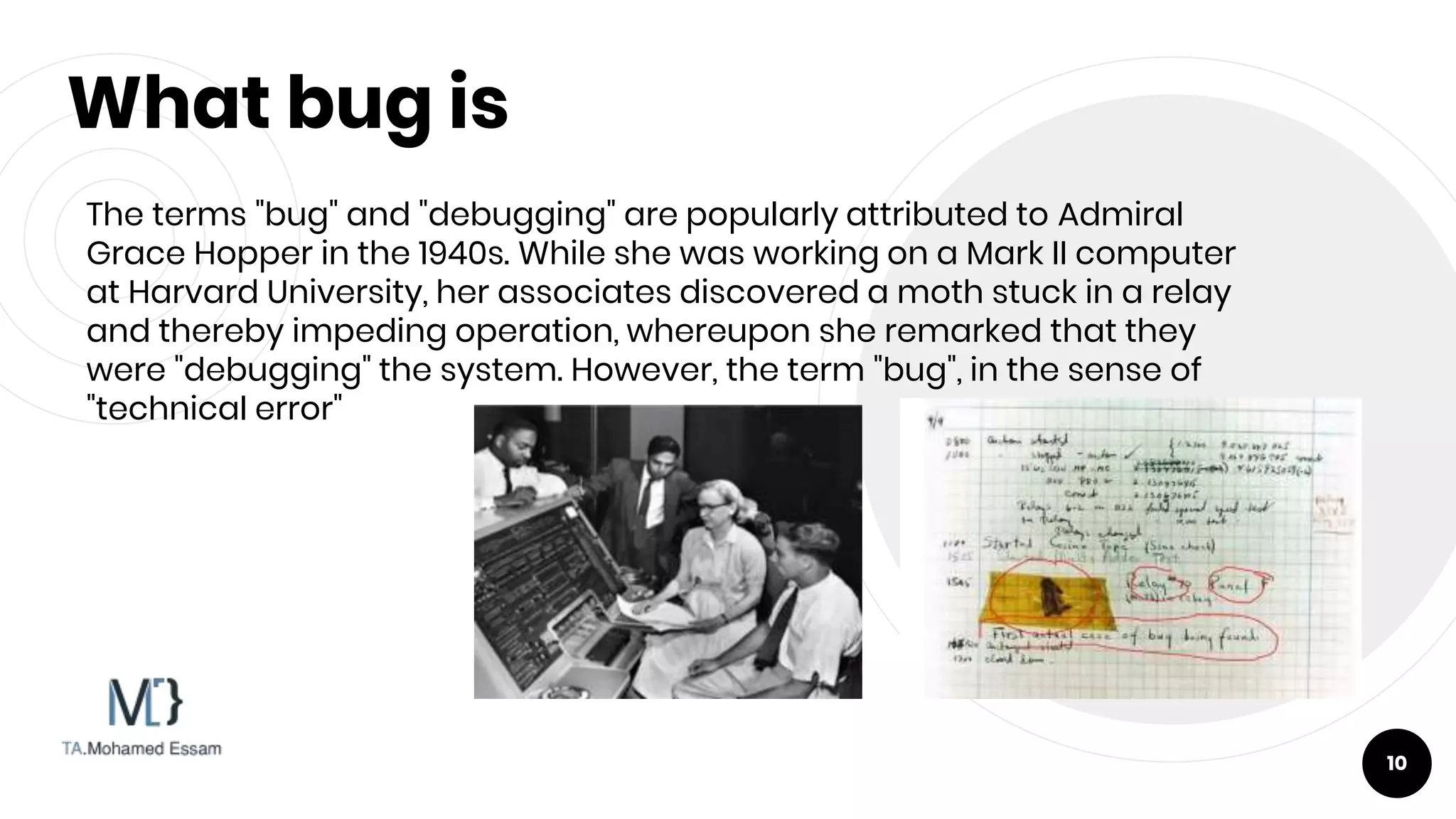
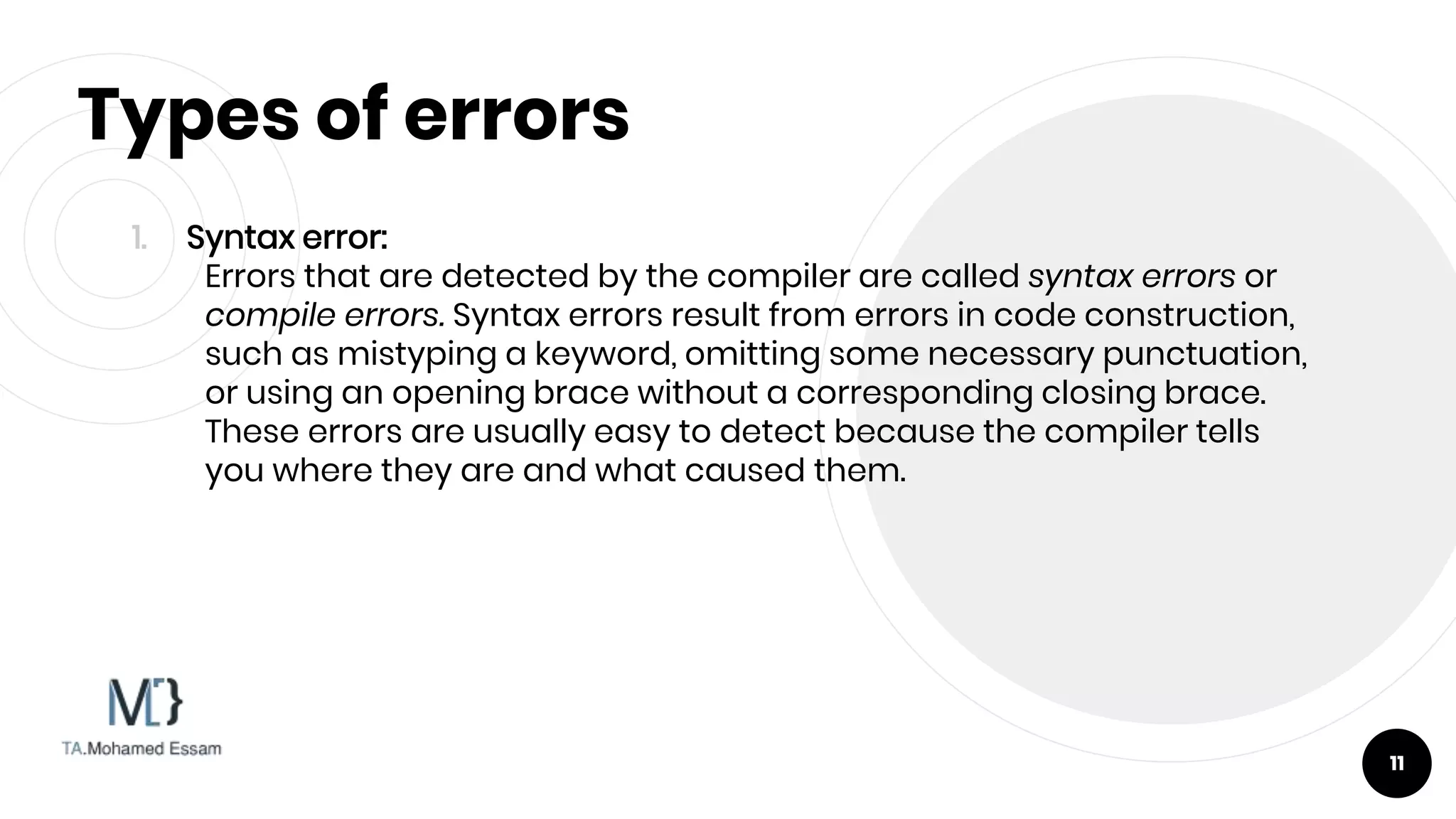
![Types of errors
2. Runtime error:
Another example of runtime errors is division by zero. This happens
when the divisor is zero for integer divisions.
public class ShowRuntimeErrors {
public static void main(String[] args) {
System.out.println(1 / 0);
}
}
12](https://image.slidesharecdn.com/section3-220323160745/75/Intro-to-programing-with-java-lecture-3-12-2048.jpg)
![Types of errors
3. Logic Errors:
Logic errors occur when a program does not perform the way it was
intended to. Errors of this kind occur for many different reasons.
For example if we have a program prompt a user for input and
detect if the input is negative or positive we will notice that the
program will print the zero as a negative number because it’s less
than one.
public class LogicErrors {
public static void main(String[] args) {
int x=0;
if(x>=1)
{
System.out.println("positive");
}
else if(x<1)
{System.out.println("negative");
}
}
} 13](https://image.slidesharecdn.com/section3-220323160745/75/Intro-to-programing-with-java-lecture-3-13-2048.jpg)
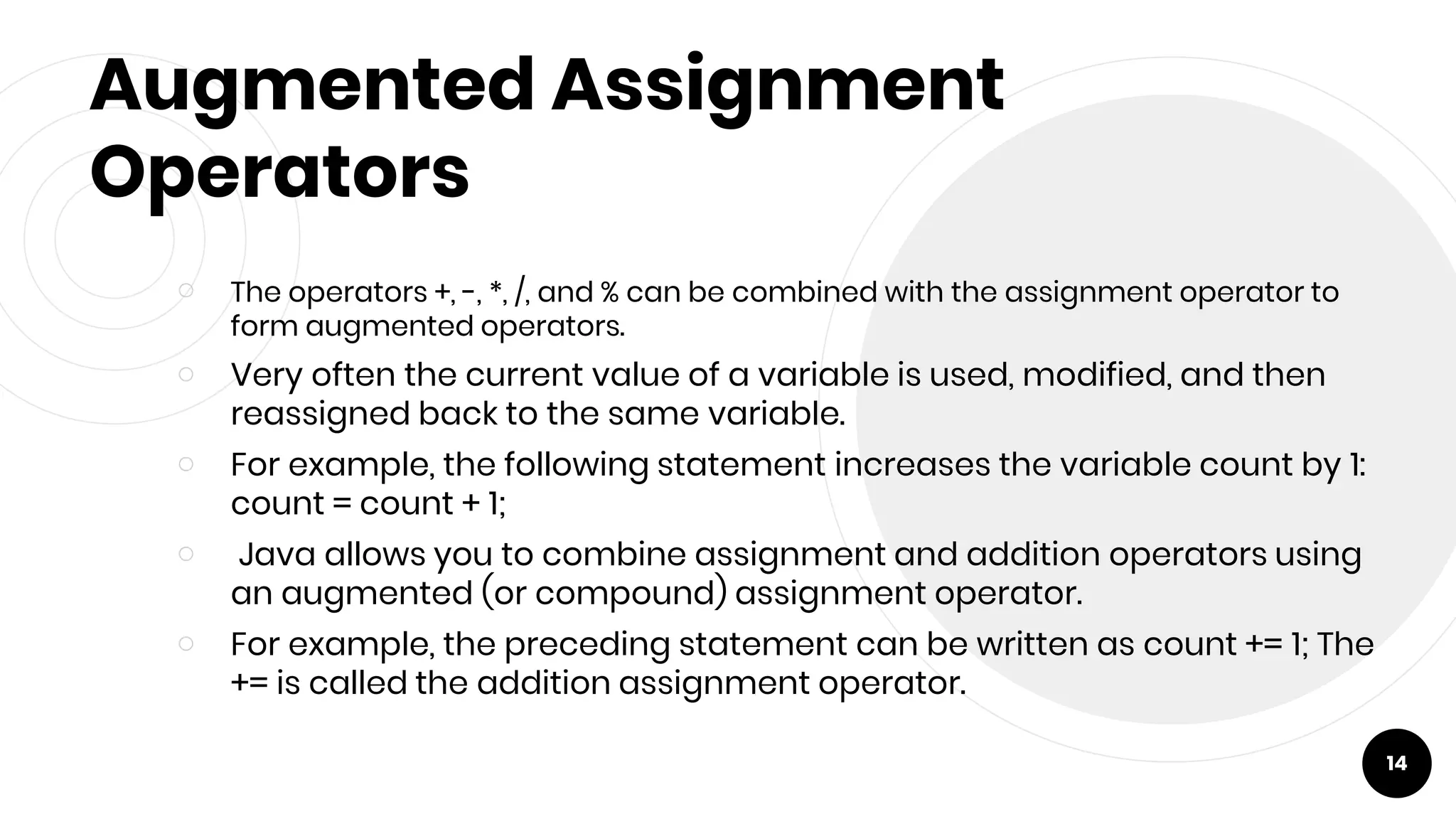
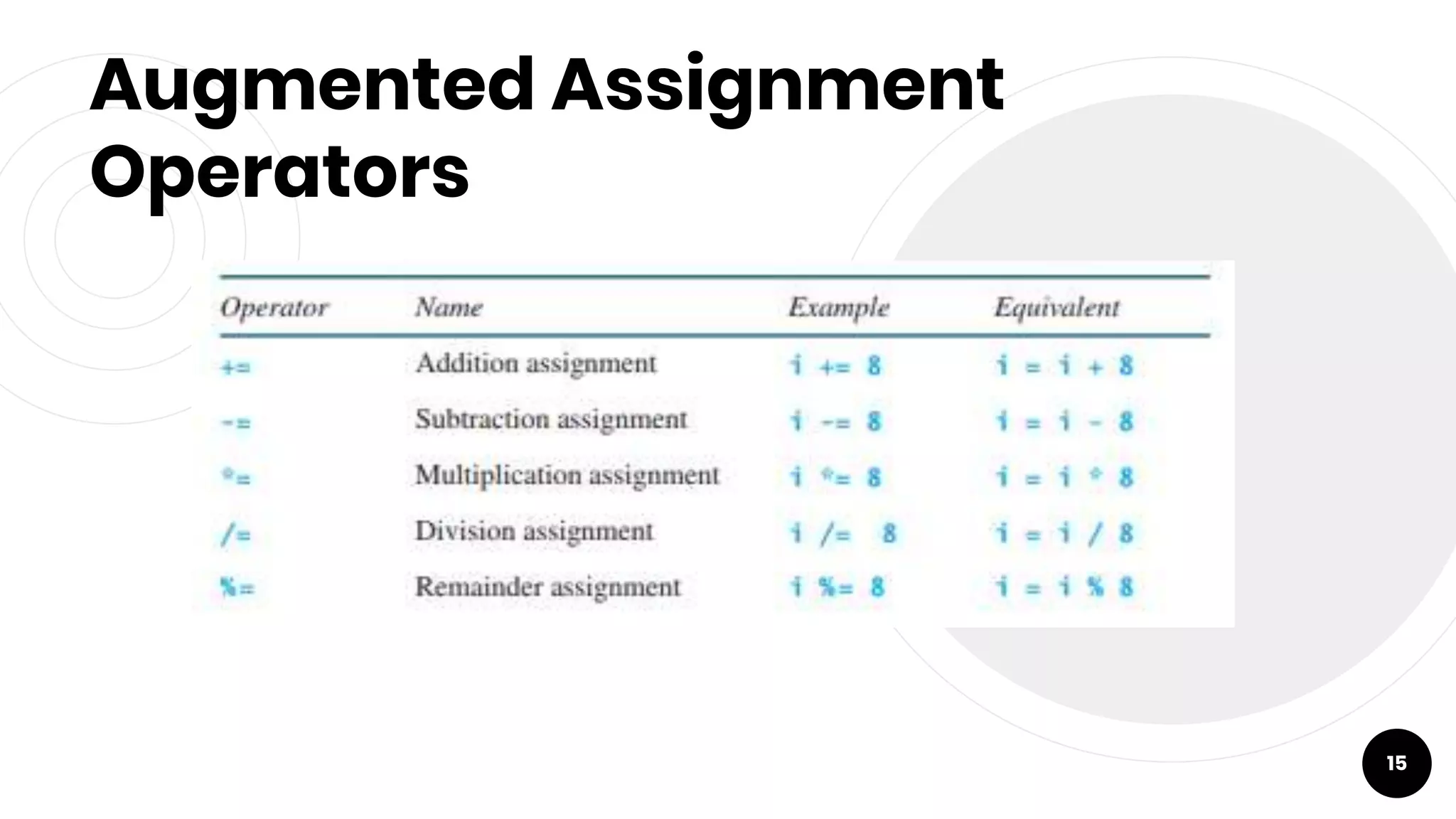
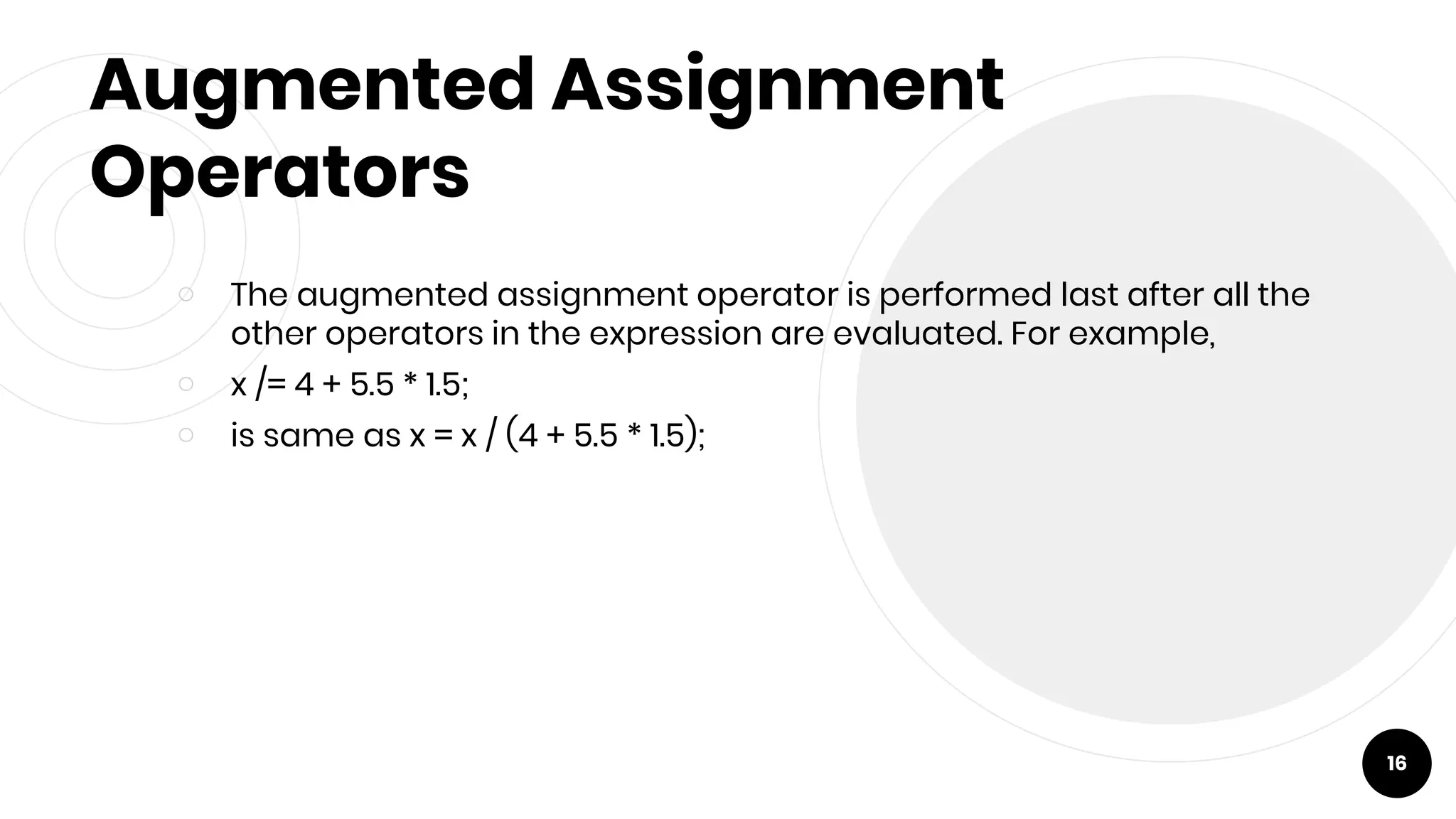
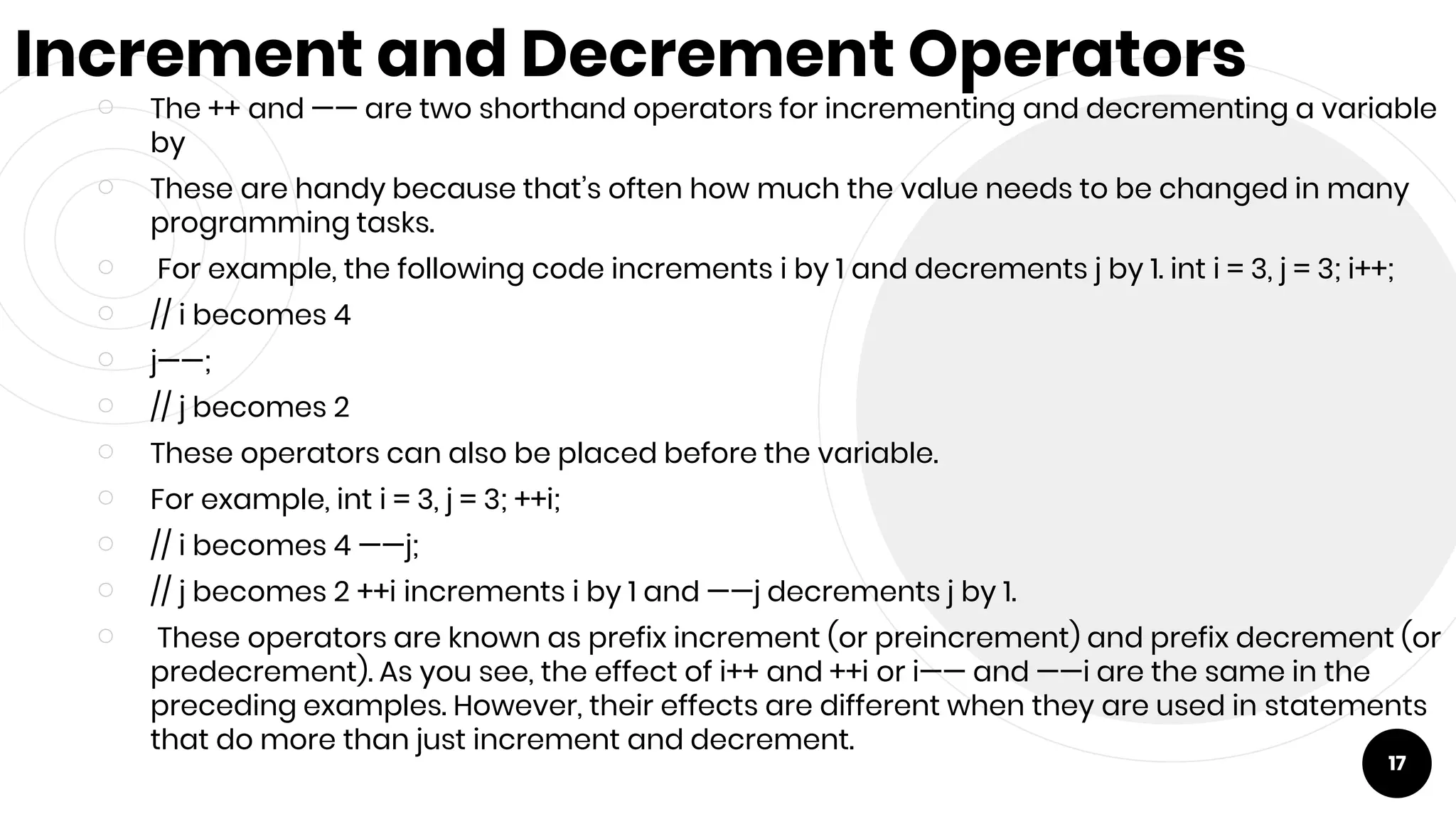

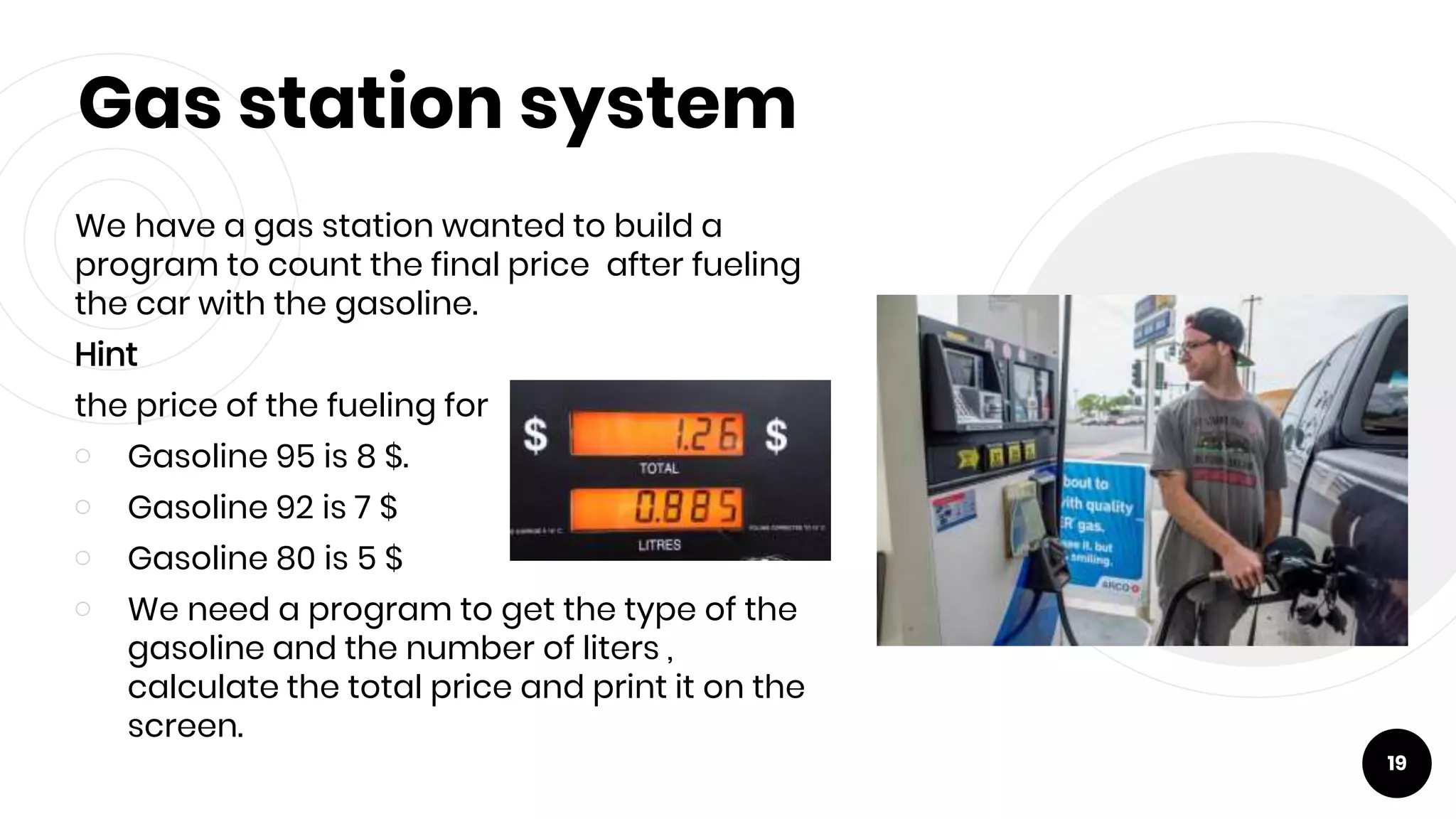
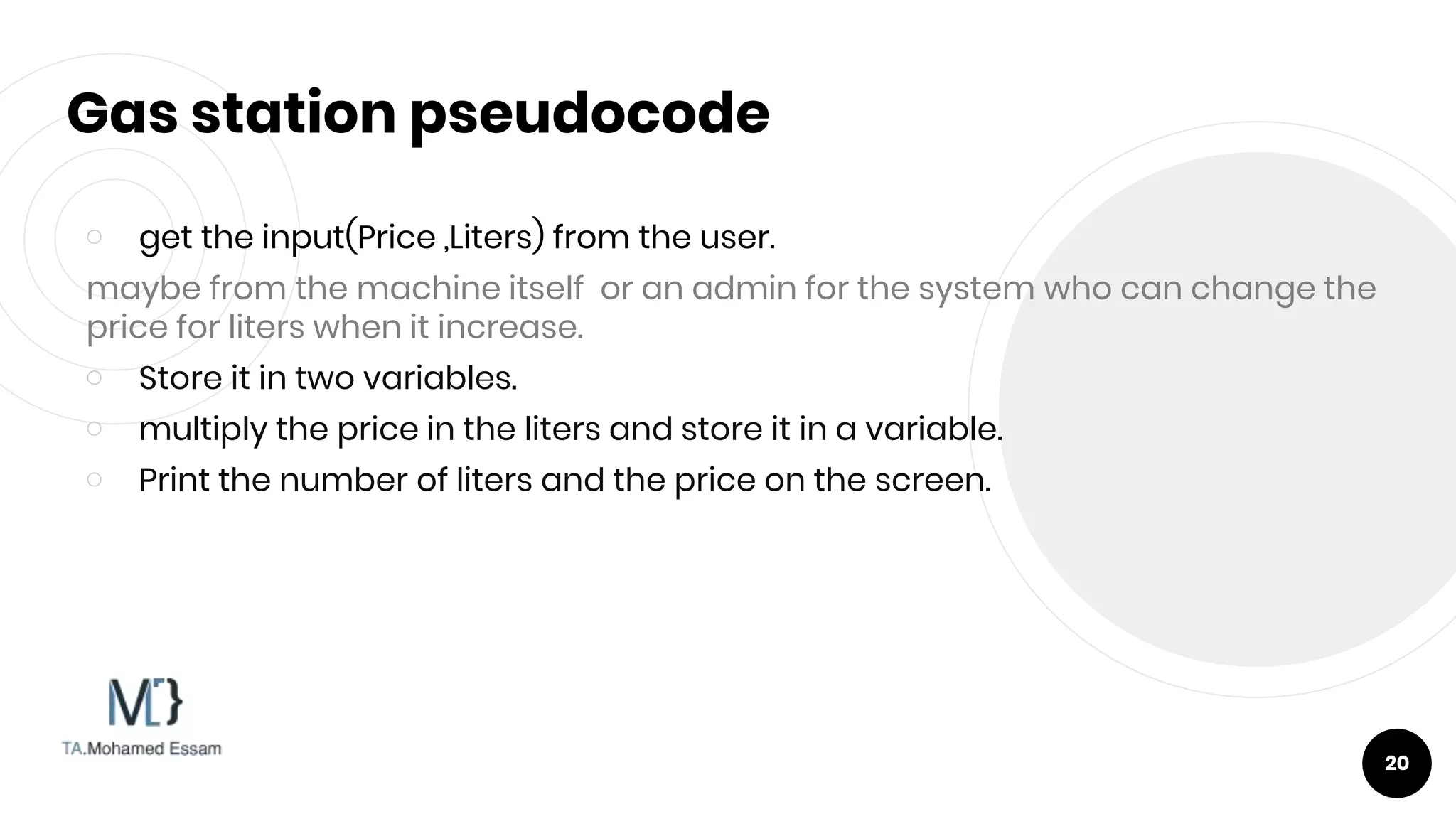
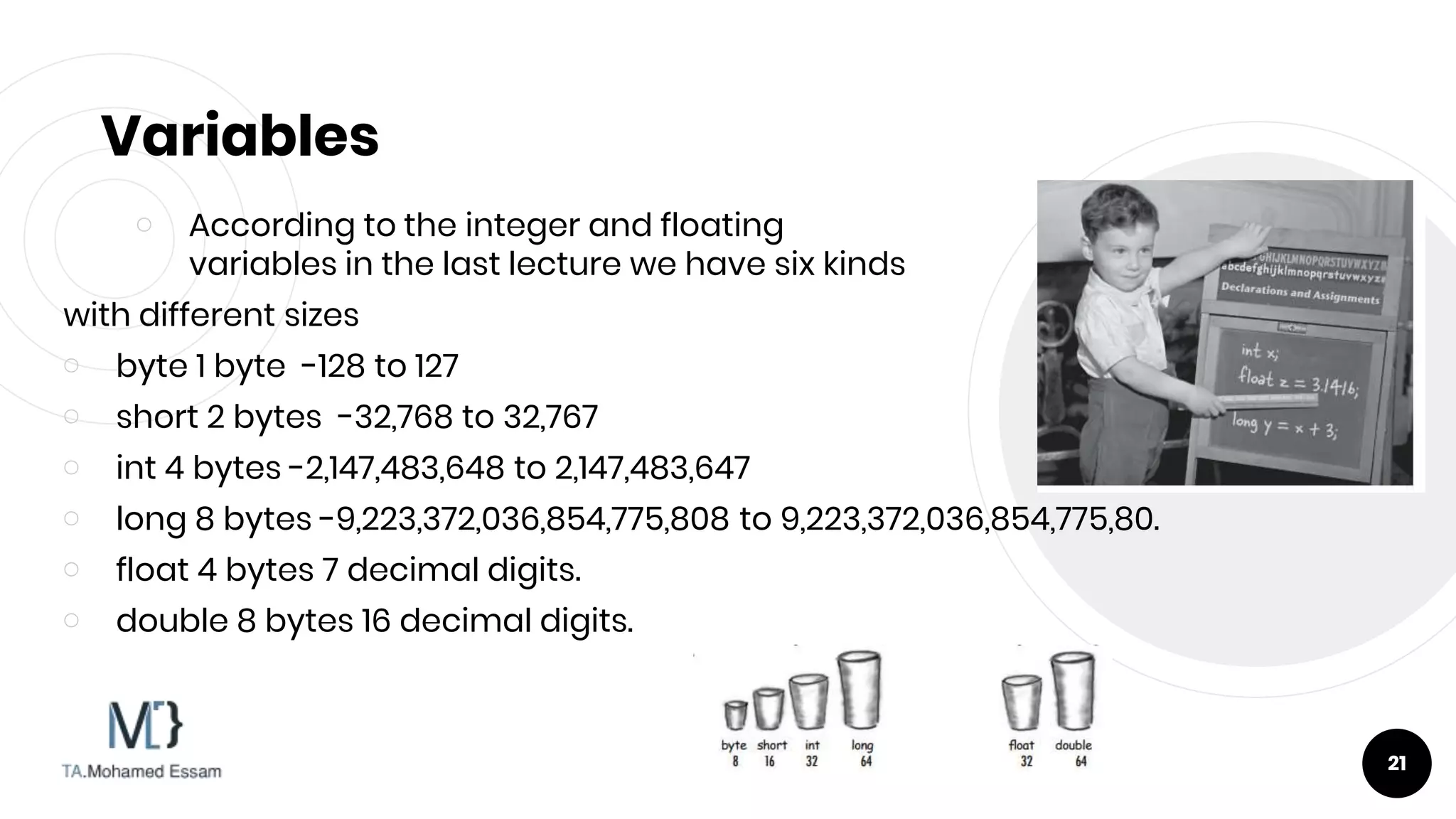
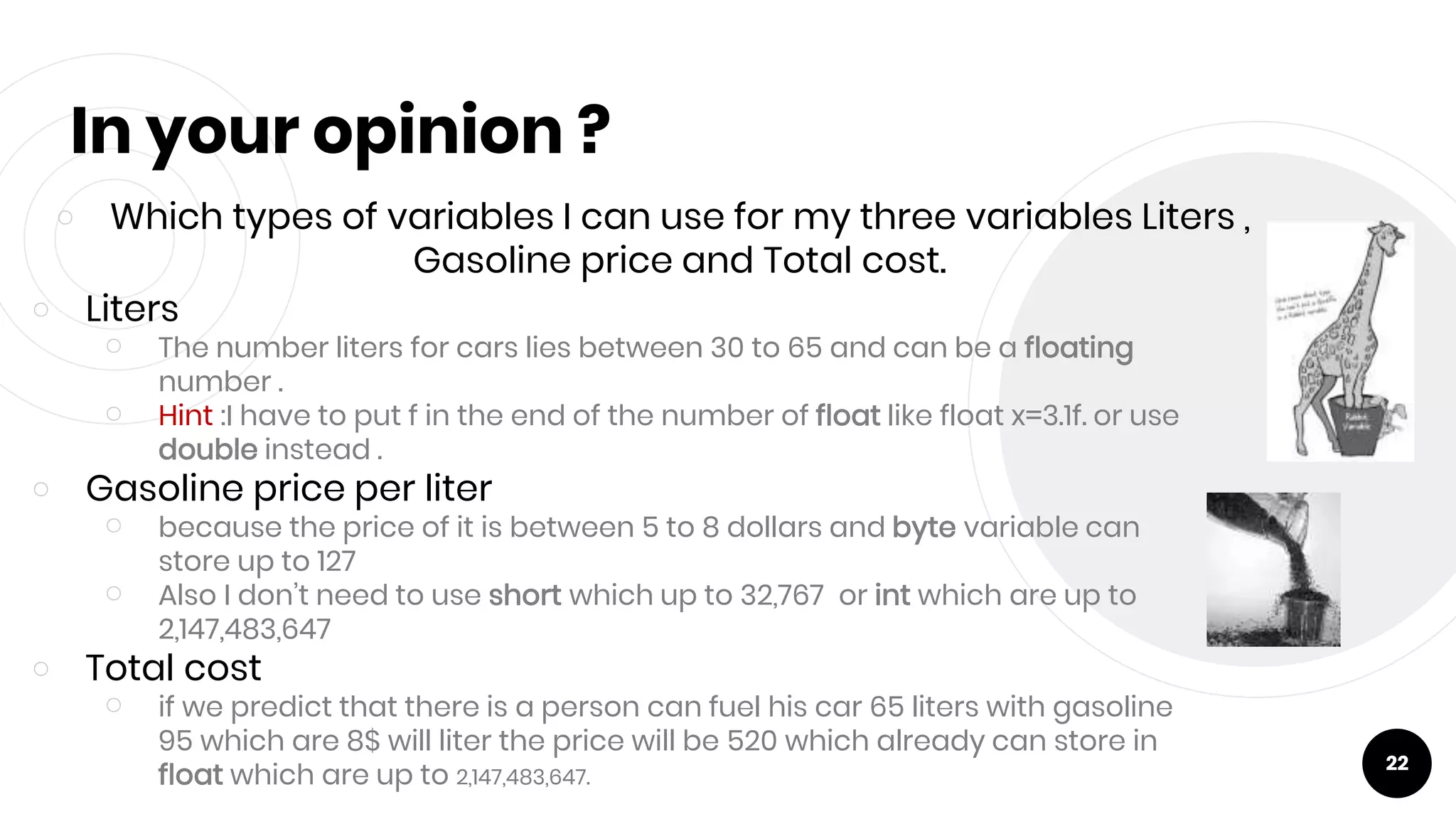
![public class gasstation {
public static void main(String[] args) {
float x=30.55f;
byte y=8;
float z=x*y;
System.out.println(z);
//system.out.println(liters*gasolineprice);
}
}
23
244.4
Output](https://image.slidesharecdn.com/section3-220323160745/75/Intro-to-programing-with-java-lecture-3-23-2048.jpg)
![public class gasstation {
public static void main(String[] args) { Bad Design
float x=30.55f;
byte y=8;
float z=x*y;
System.out.println(z);
//system.out.println(liters*gasolineprice);
}
}
24
244.4
Output](https://image.slidesharecdn.com/section3-220323160745/75/Intro-to-programing-with-java-lecture-3-24-2048.jpg)

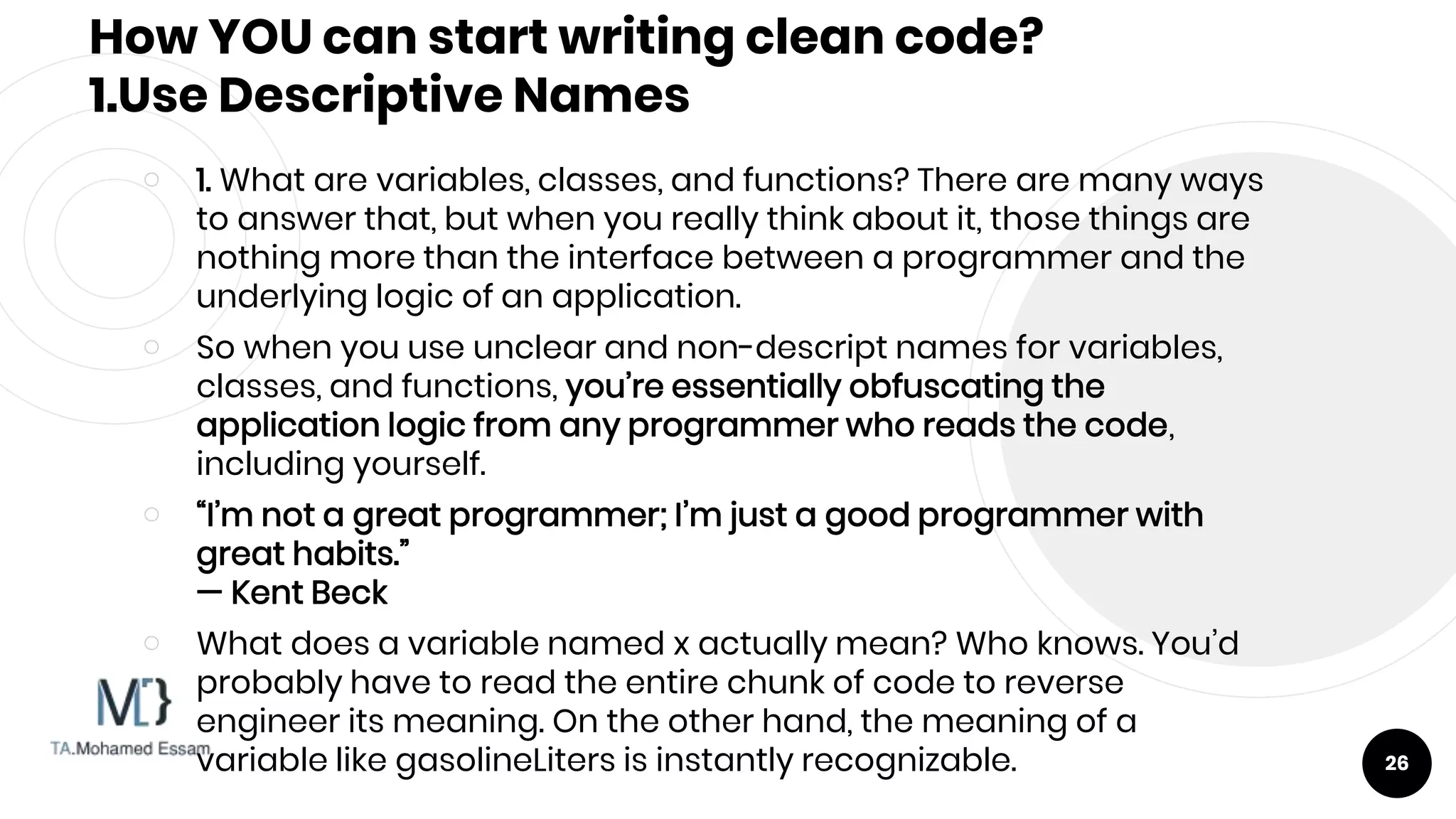
![public class gasstation {
public static void main(String[] args) {
float gasLiters=30.55f;
byte gasLiterPrice=8;
float totalCost=gasLiters*gasLiterPrice;
System.out.println(totalCost);
}
}
27
244.4
Output](https://image.slidesharecdn.com/section3-220323160745/75/Intro-to-programing-with-java-lecture-3-27-2048.jpg)
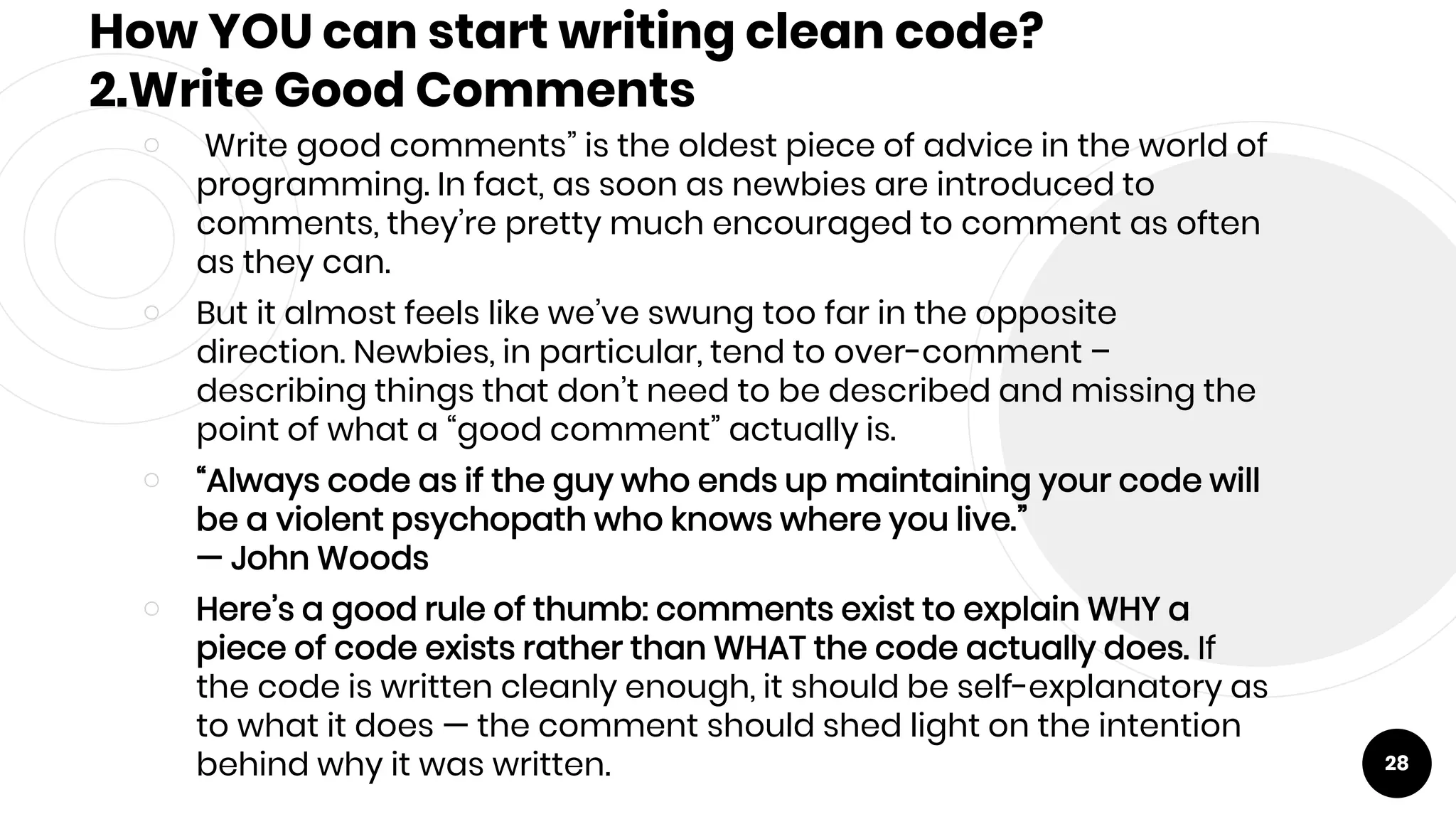
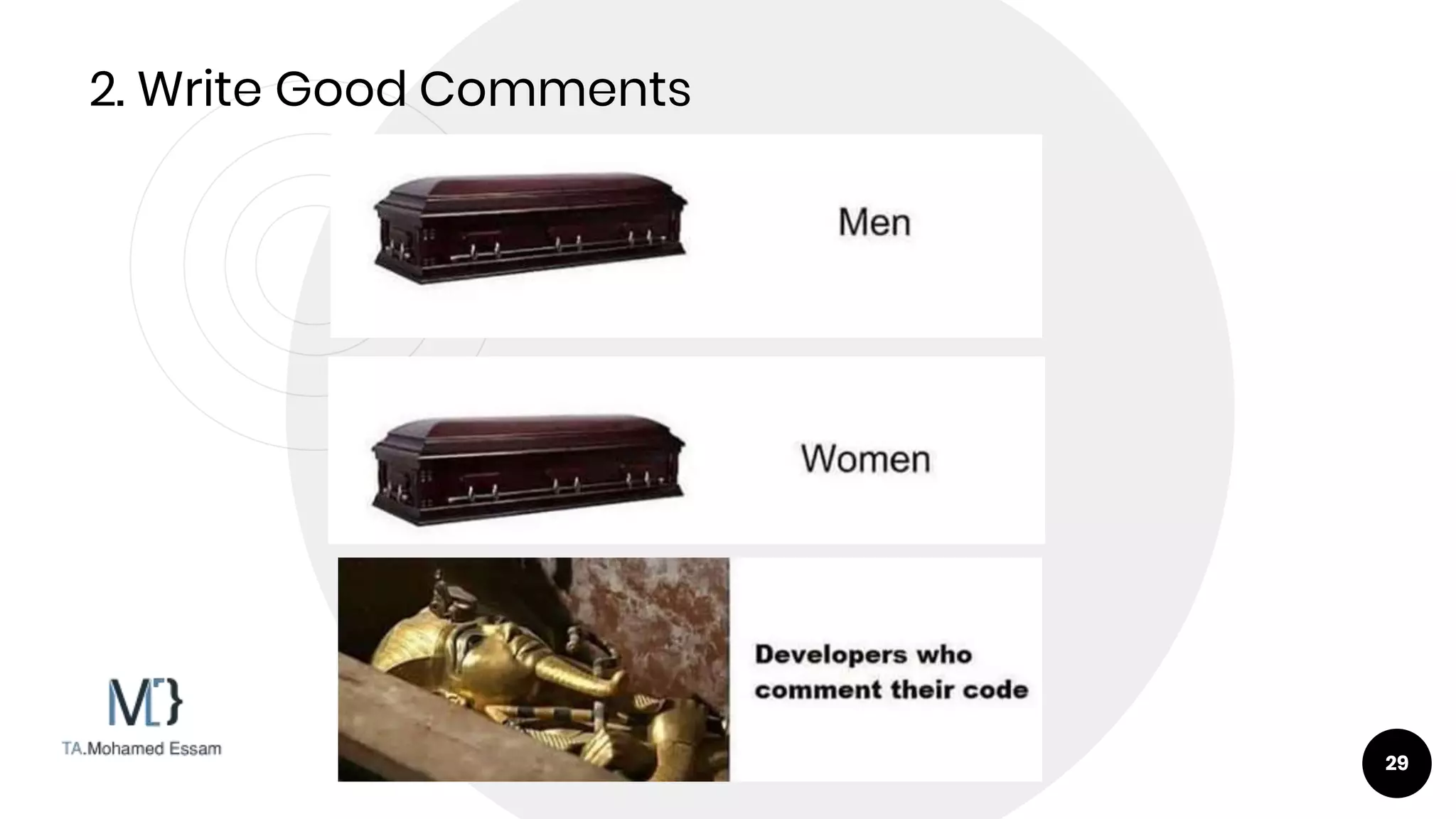
![public class gasstation {
public static void main(String[] args) {
float gasLiters=30.55f;
// For Gasoline 95
byte gasLiterPrice=8;
//the total cost of gasLiter which are the multiply of gasLiters * gasLiterPrice
float totalCost=gasLiters*gasLiterPrice;
System.out.println(totalCost);
}
}
30
244.4
Output](https://image.slidesharecdn.com/section3-220323160745/75/Intro-to-programing-with-java-lecture-3-30-2048.jpg)
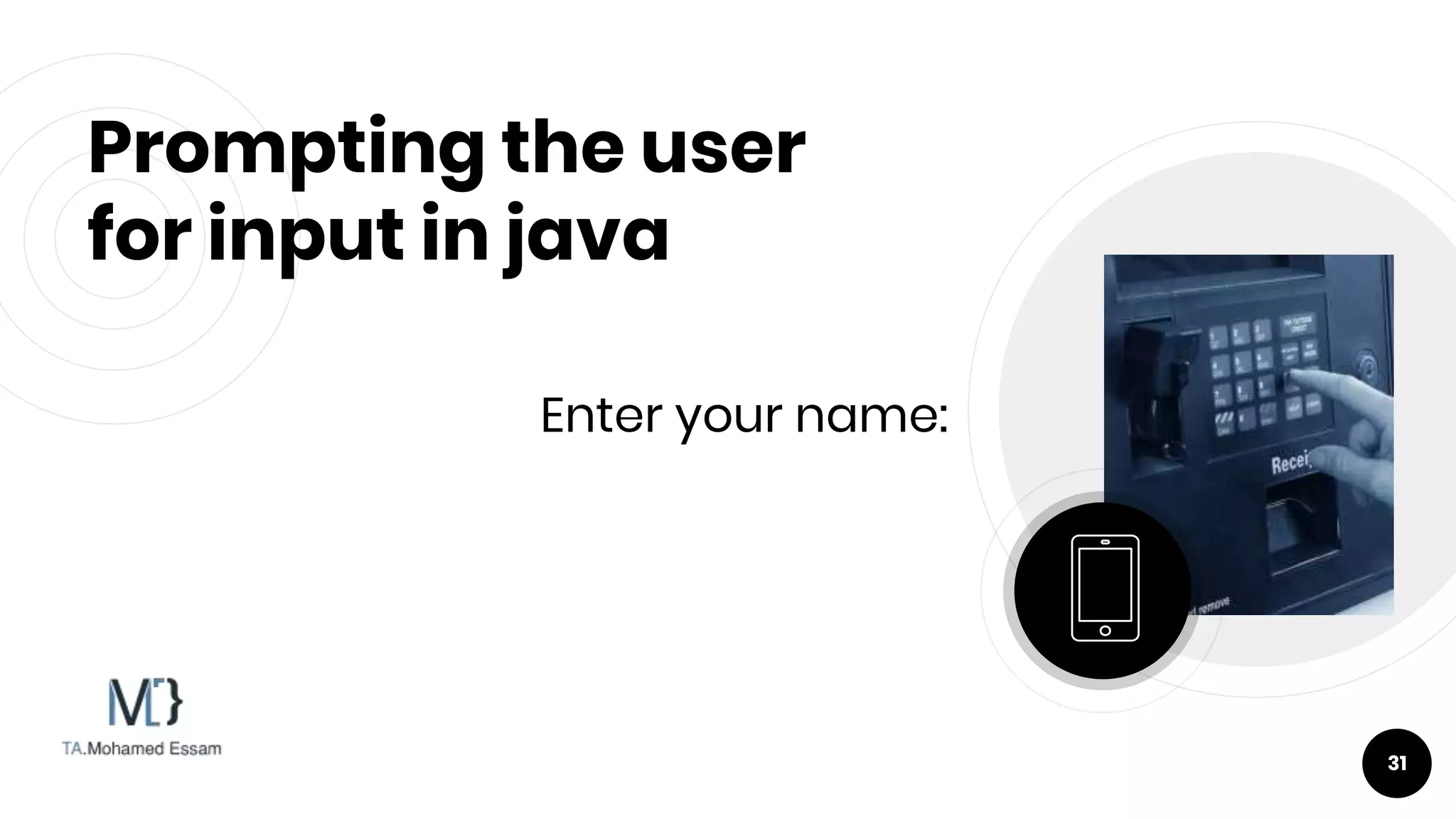
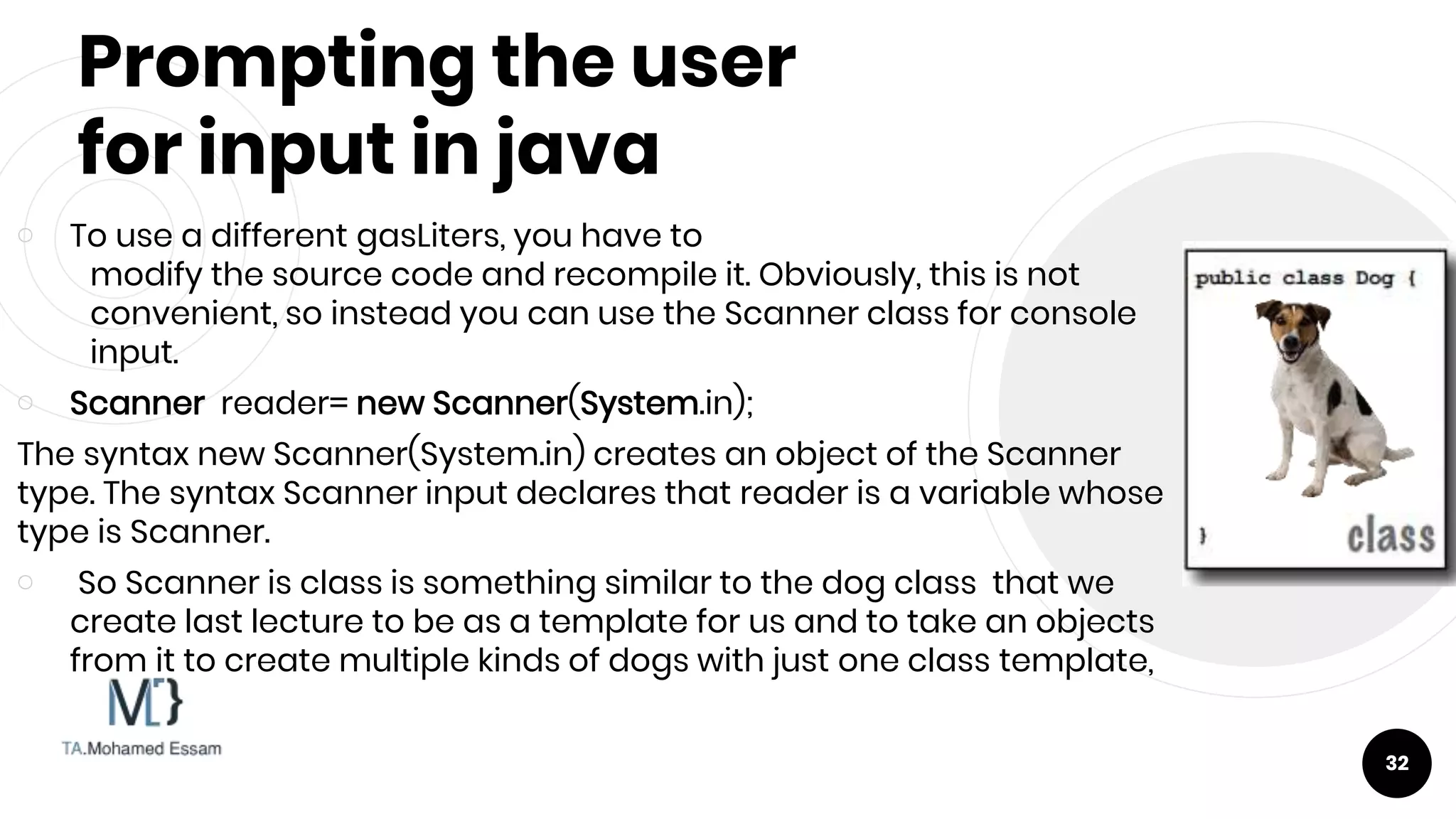

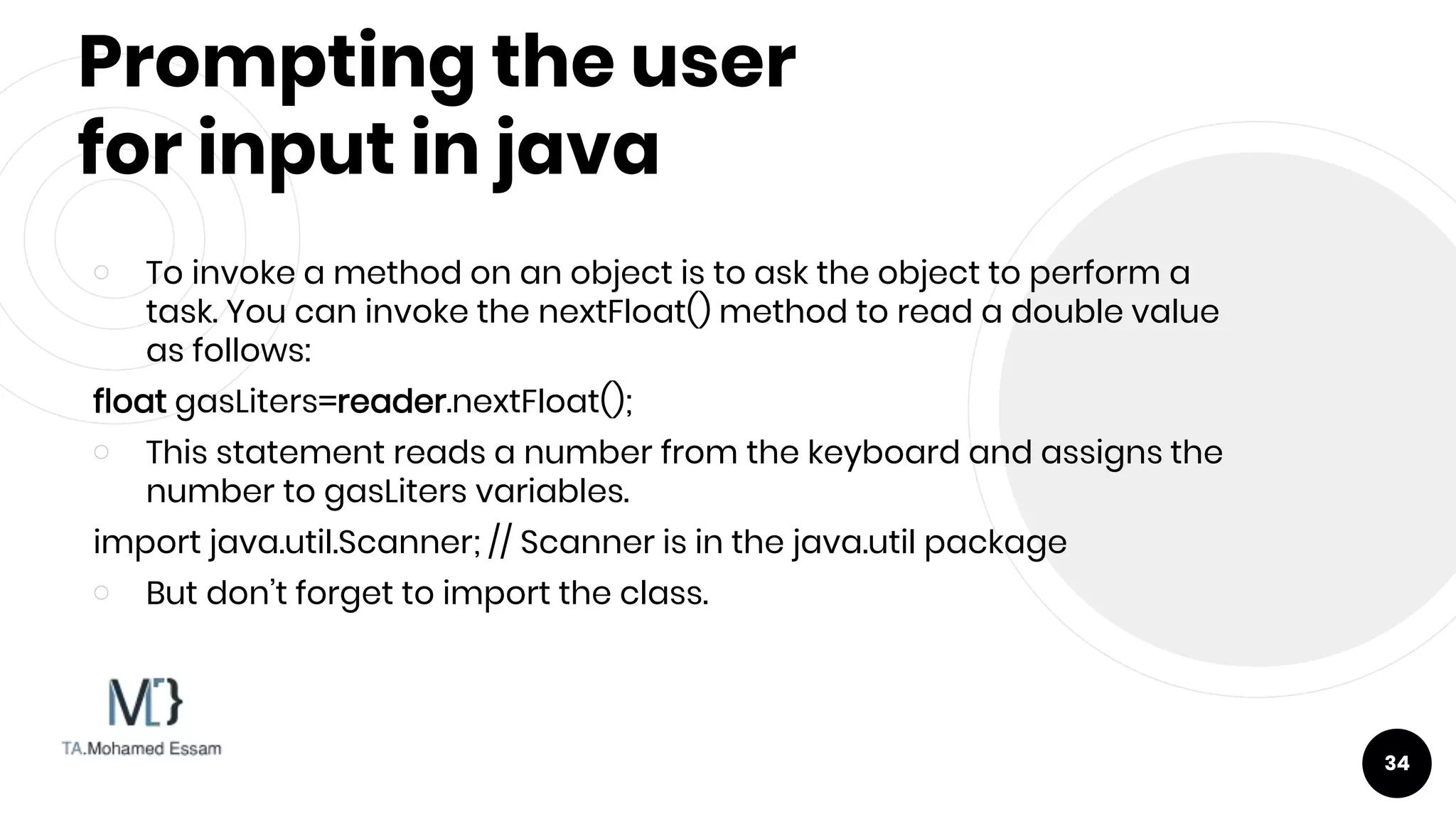
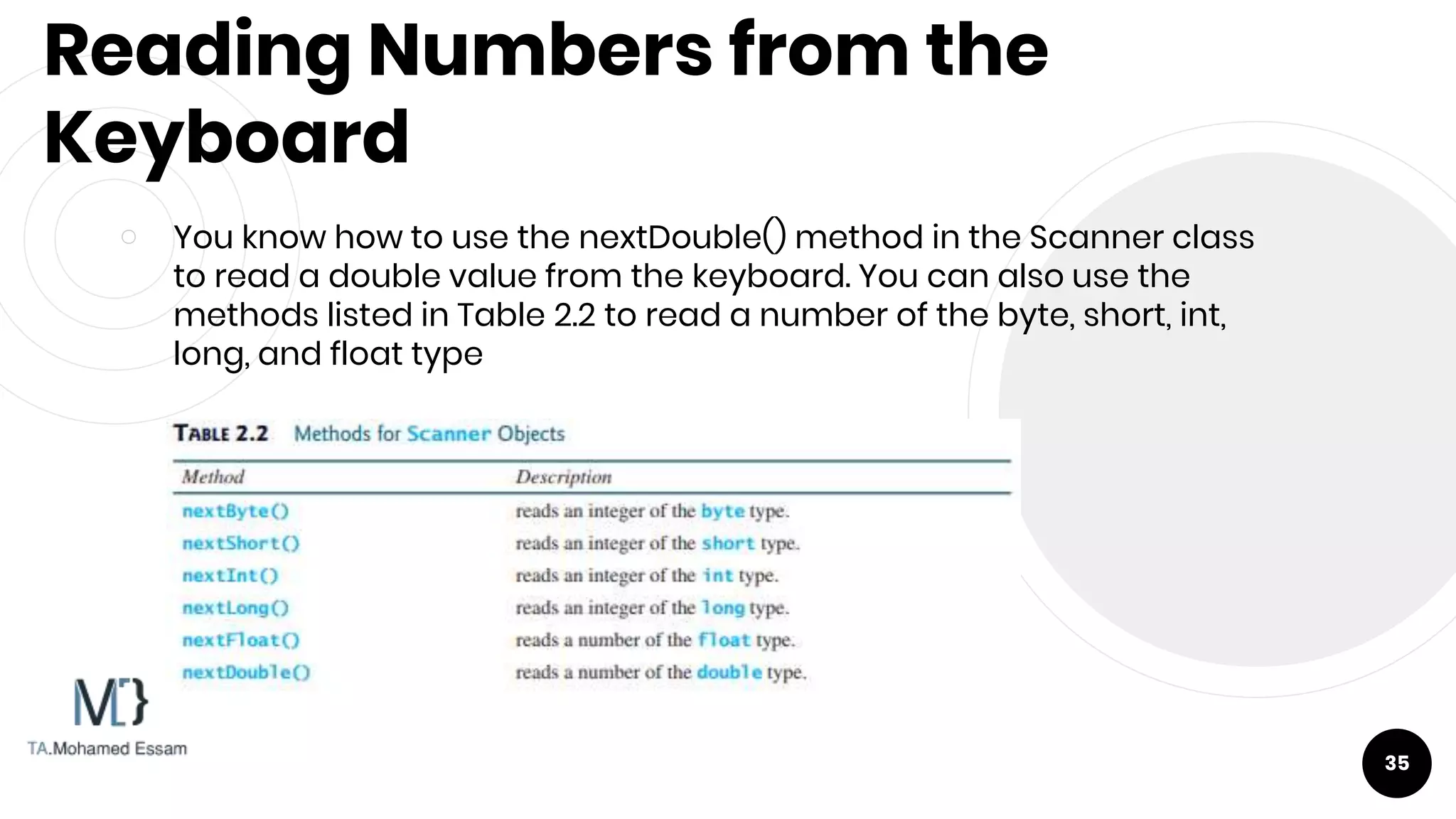
![Prompting the user
for input in java
import java.util.Scanner;
public class gasstation {
public static void main(String[] args) {
Scanner reader = new Scanner(System.in); // Reading from System.in
int gasLiters= reader.nextFloat(); // Scans the next token of the input as an int.
36](https://image.slidesharecdn.com/section3-220323160745/75/Intro-to-programing-with-java-lecture-3-36-2048.jpg)
![import java.util.Scanner;
public class gasstation {
public static void main(String[] args) {
Scanner reader = new Scanner(System.in); // Reading from System.in
// Prompt the user to enter the liters number
System.out.print("Enter the number of liters: ");
float gasLiters=reader.nextFloat();
// Prompt the user to enter a gas price
System.out.print("Enter the gas price : ");
byte gasLiterPrice=reader.nextByte();
float totalCost=gasLiters*gasLiterPrice;
System.out.println("the total cost is: "+totalCost);
}
} 37](https://image.slidesharecdn.com/section3-220323160745/75/Intro-to-programing-with-java-lecture-3-37-2048.jpg)
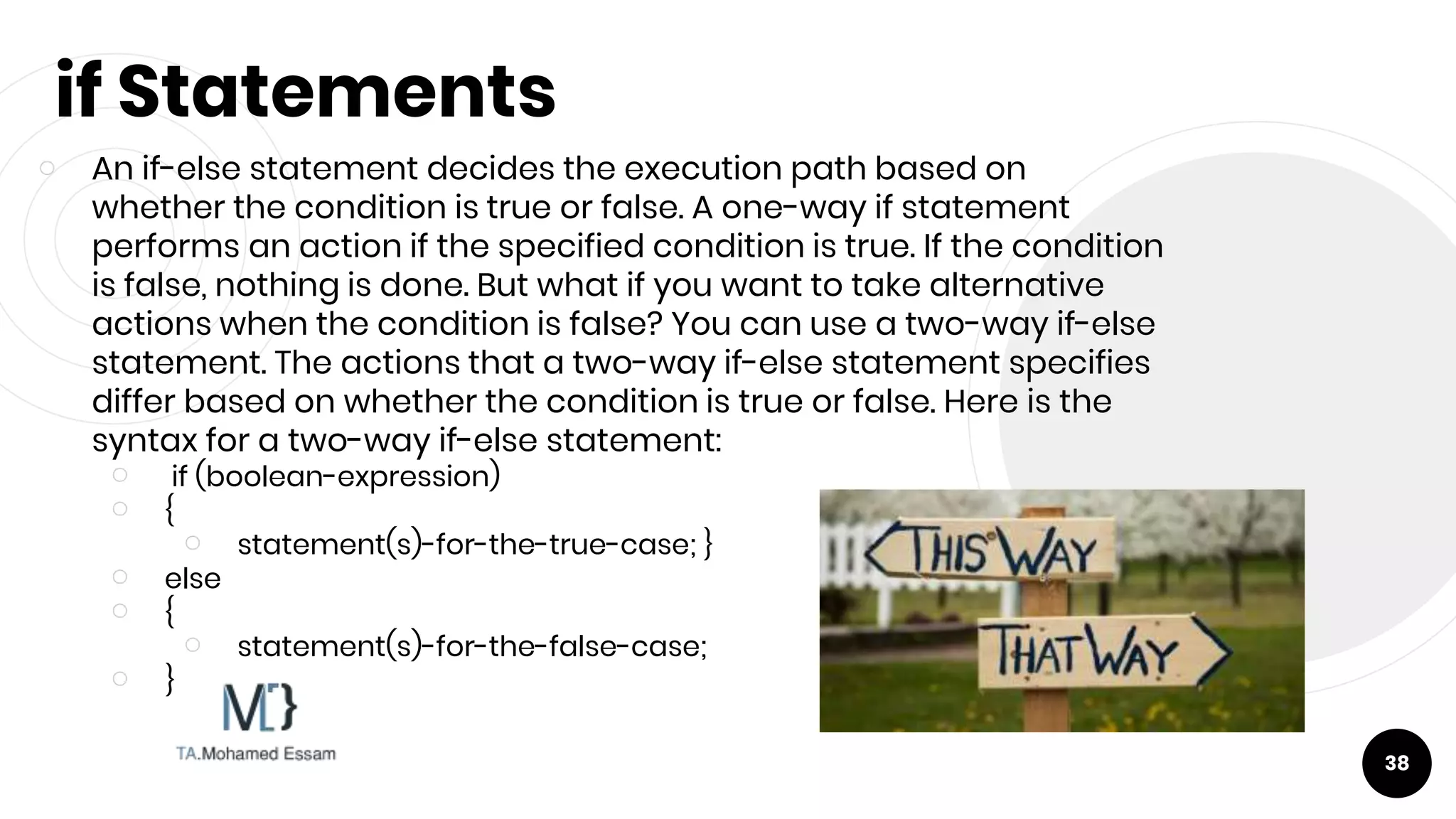
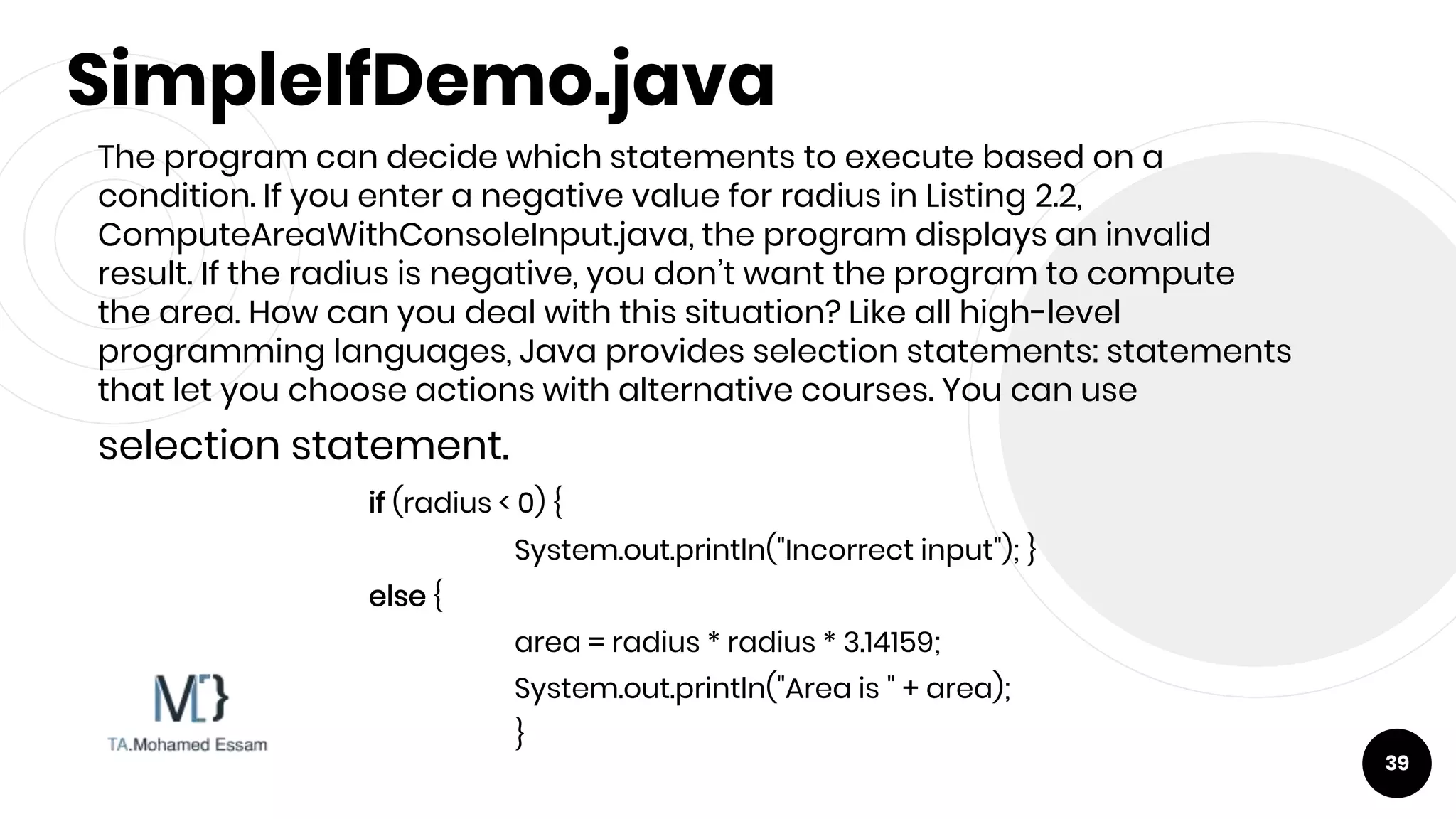
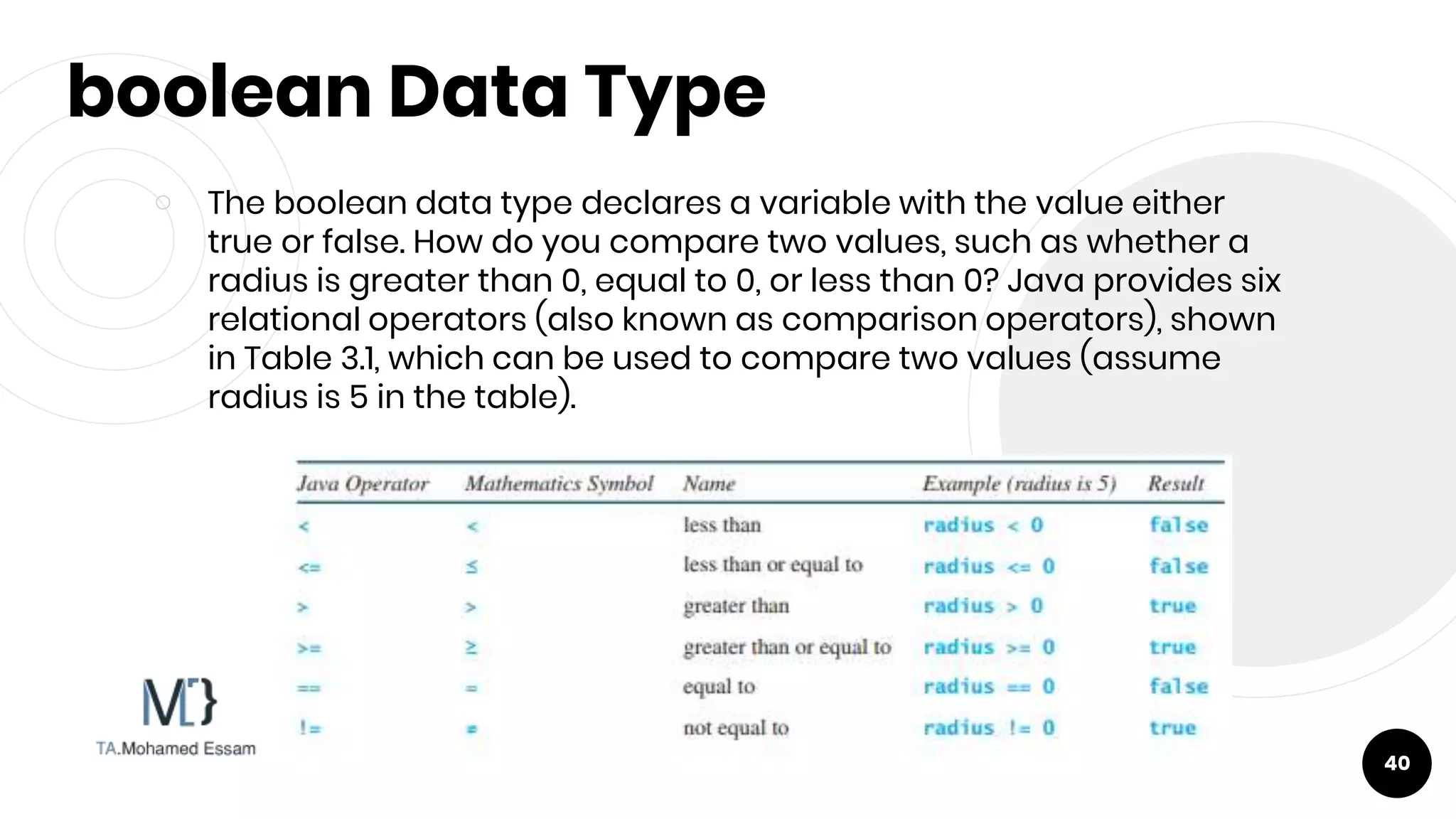
![SimpleIfDemo.java 1
import java.util.Scanner;
public class SimpleIfDemo
{
public static void main(String[] args) {
Scanner input = new Scanner(System.in);
System.out.println("Enter your grade: ");
byte grade = input.nextByte();
if (grade > =50) System.out.println(“Passed");
else if (grade <50) System.out.println(“failed");
}
}
41](https://image.slidesharecdn.com/section3-220323160745/75/Intro-to-programing-with-java-lecture-3-41-2048.jpg)
![SimpleIfDemo.java 2
import java.util.Scanner;
public class SimpleIfDemo
{
public static void main(String[] args) {
Scanner input = new Scanner(System.in);
System.out.println("Enter an integer: ");
int number = input.nextInt();
if (number % 2 == 0) System.out.println(“Even");
else System.out.println(“odd");
}
}
42](https://image.slidesharecdn.com/section3-220323160745/75/Intro-to-programing-with-java-lecture-3-42-2048.jpg)
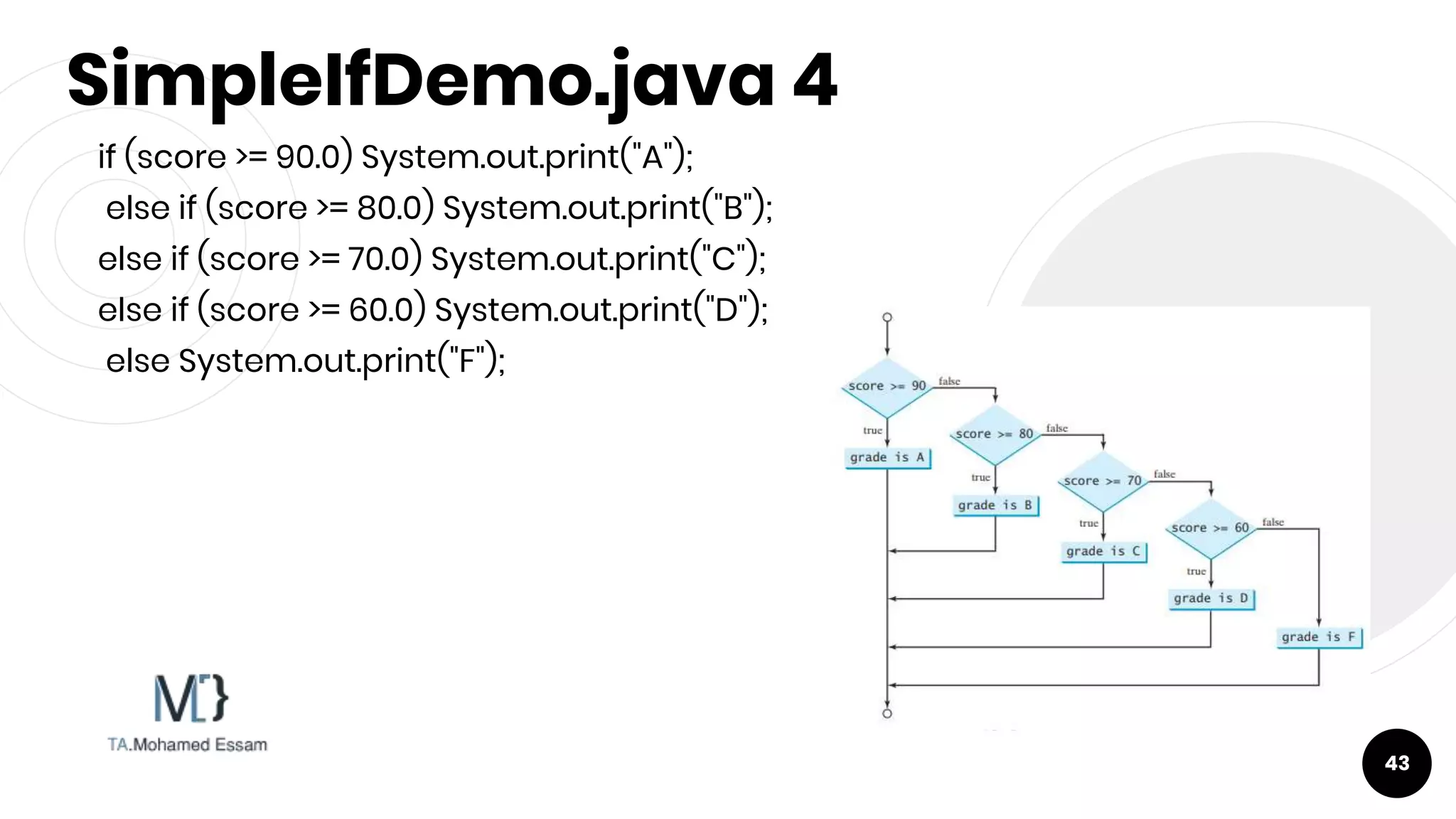

![import java.util.Scanner;
public class Gasstation {
public static void main(String[] args) {
Scanner input =new Scanner(System.in);
System.out.print("Enter the pumpnumber:");
byte pumpnumber=input.nextByte();
if(pumpnumber==80)
{
System.out.print("Enter the number of gasliters:");
byte pumpprice=5;
float gasliters=input.nextFloat();
float totalcost=gasliters*pumpprice;
System.out.println("The total cost is :"+totalcost);
}
45](https://image.slidesharecdn.com/section3-220323160745/75/Intro-to-programing-with-java-lecture-3-45-2048.jpg)
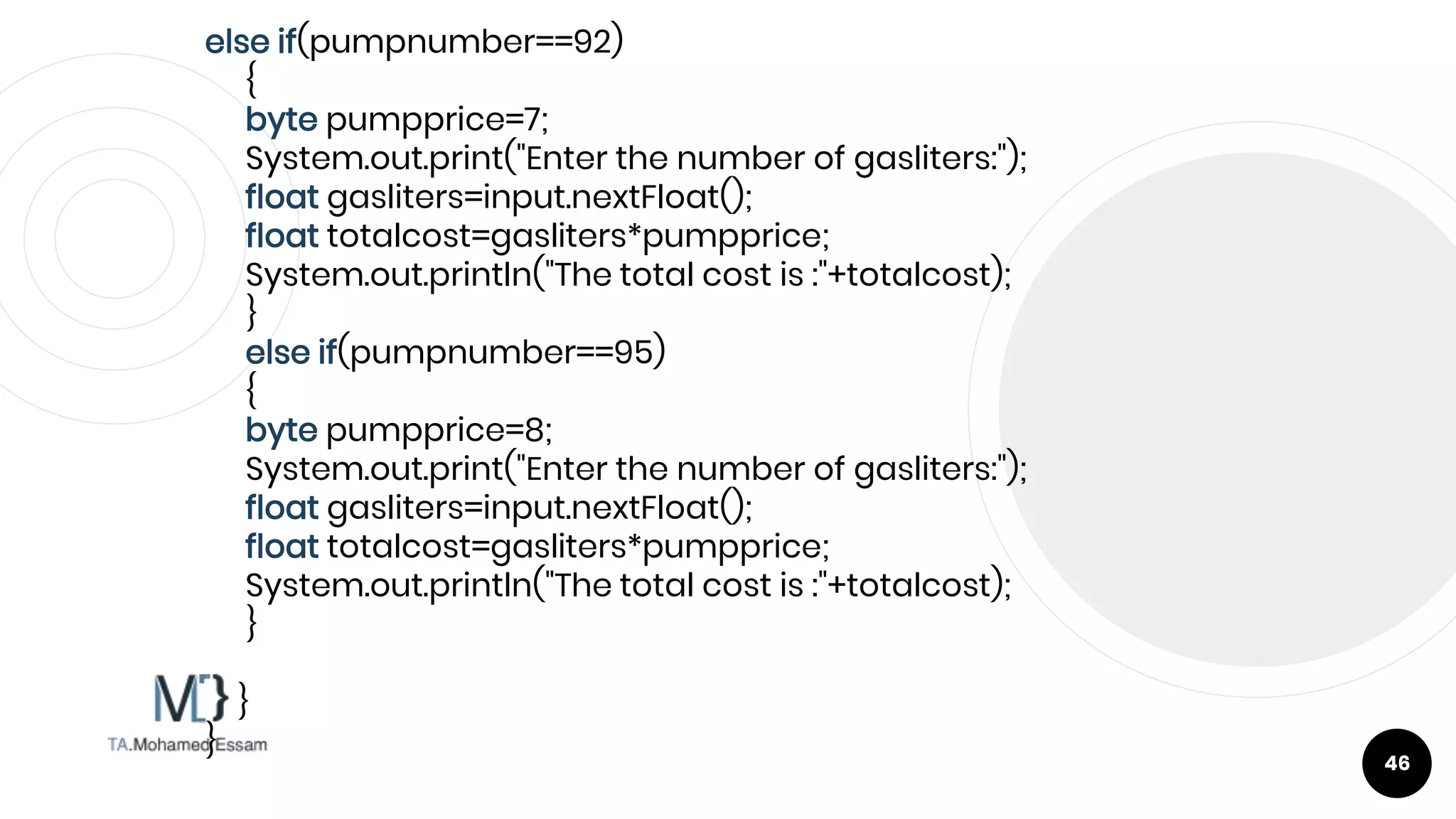
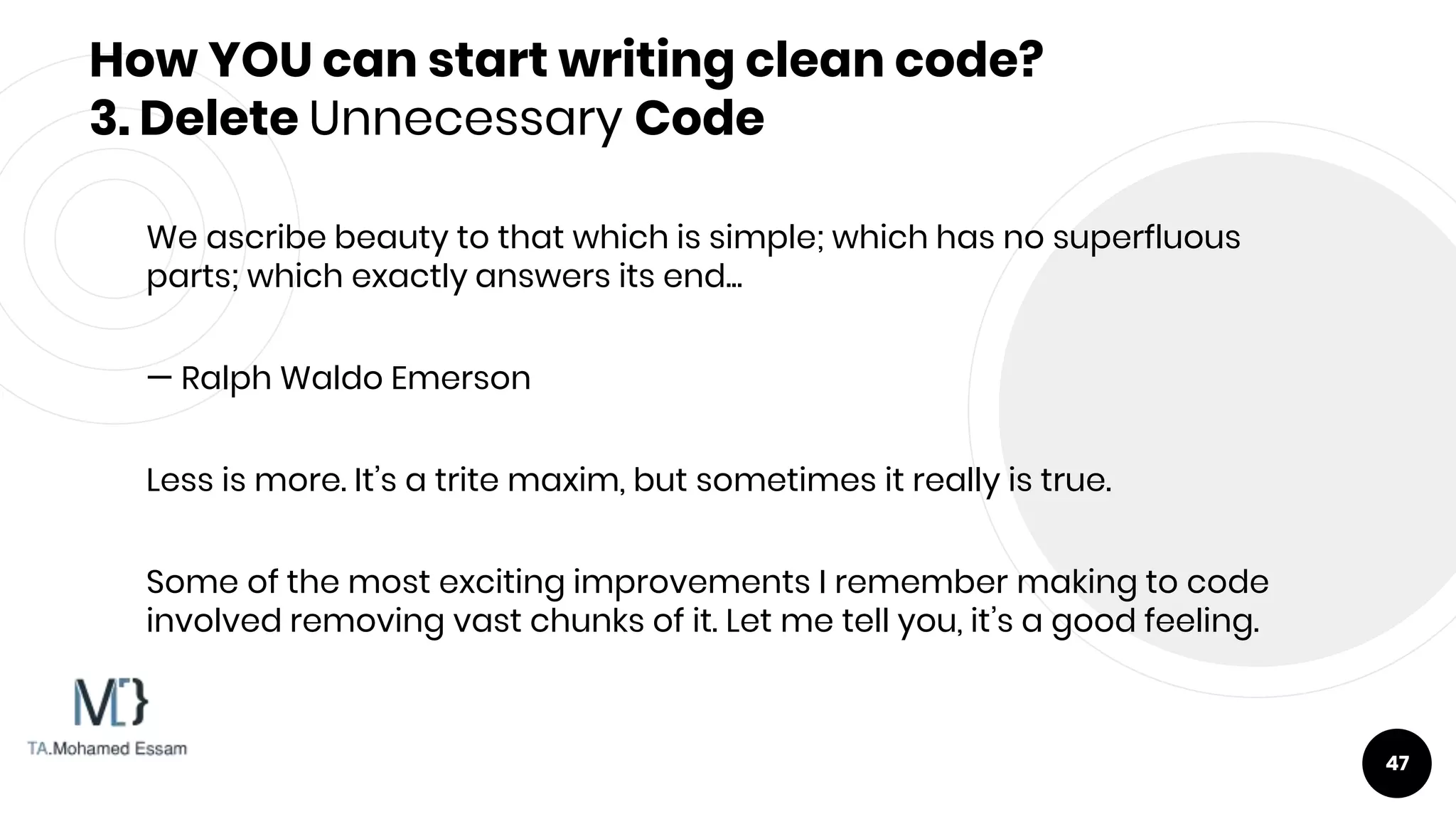
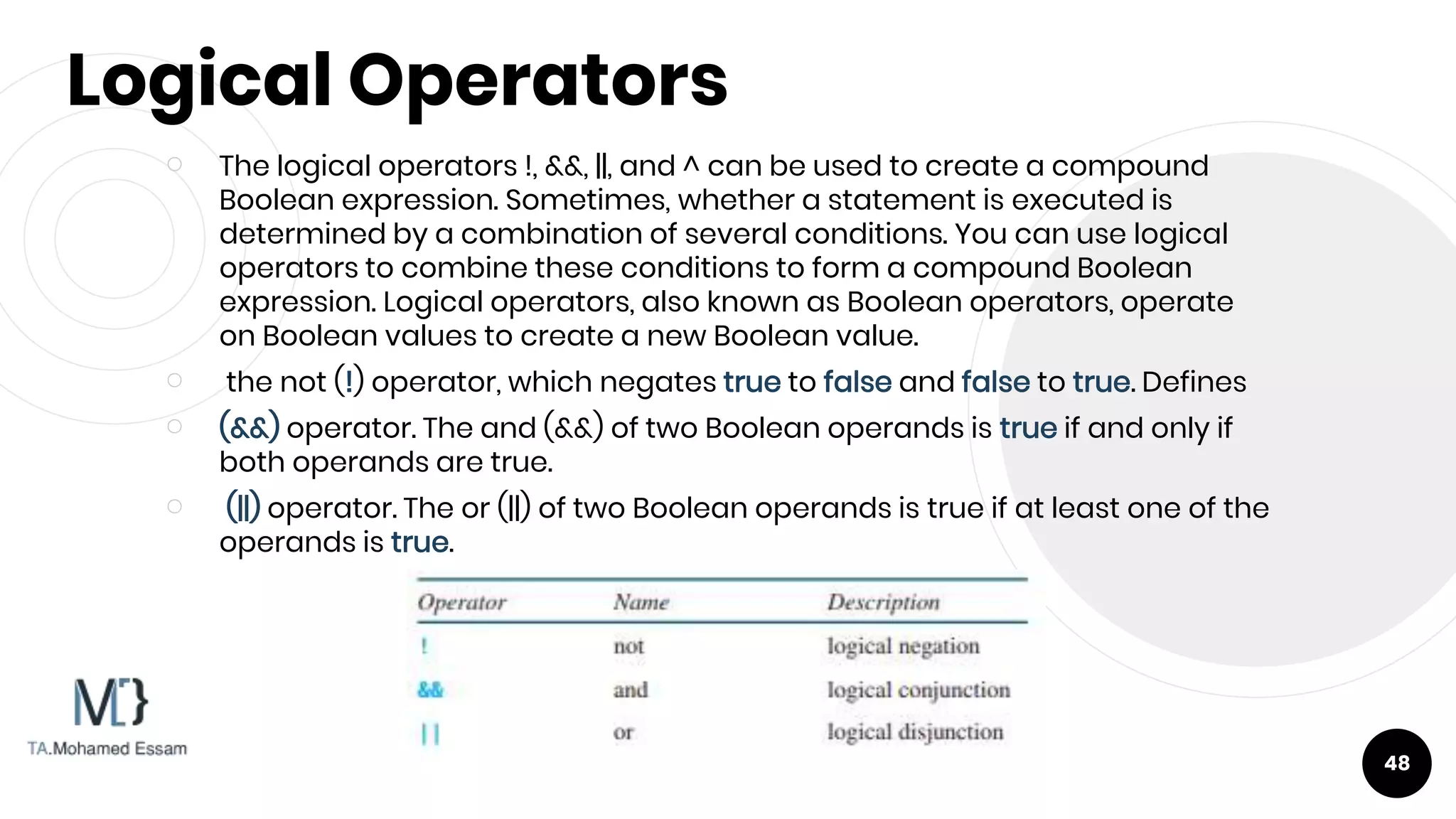
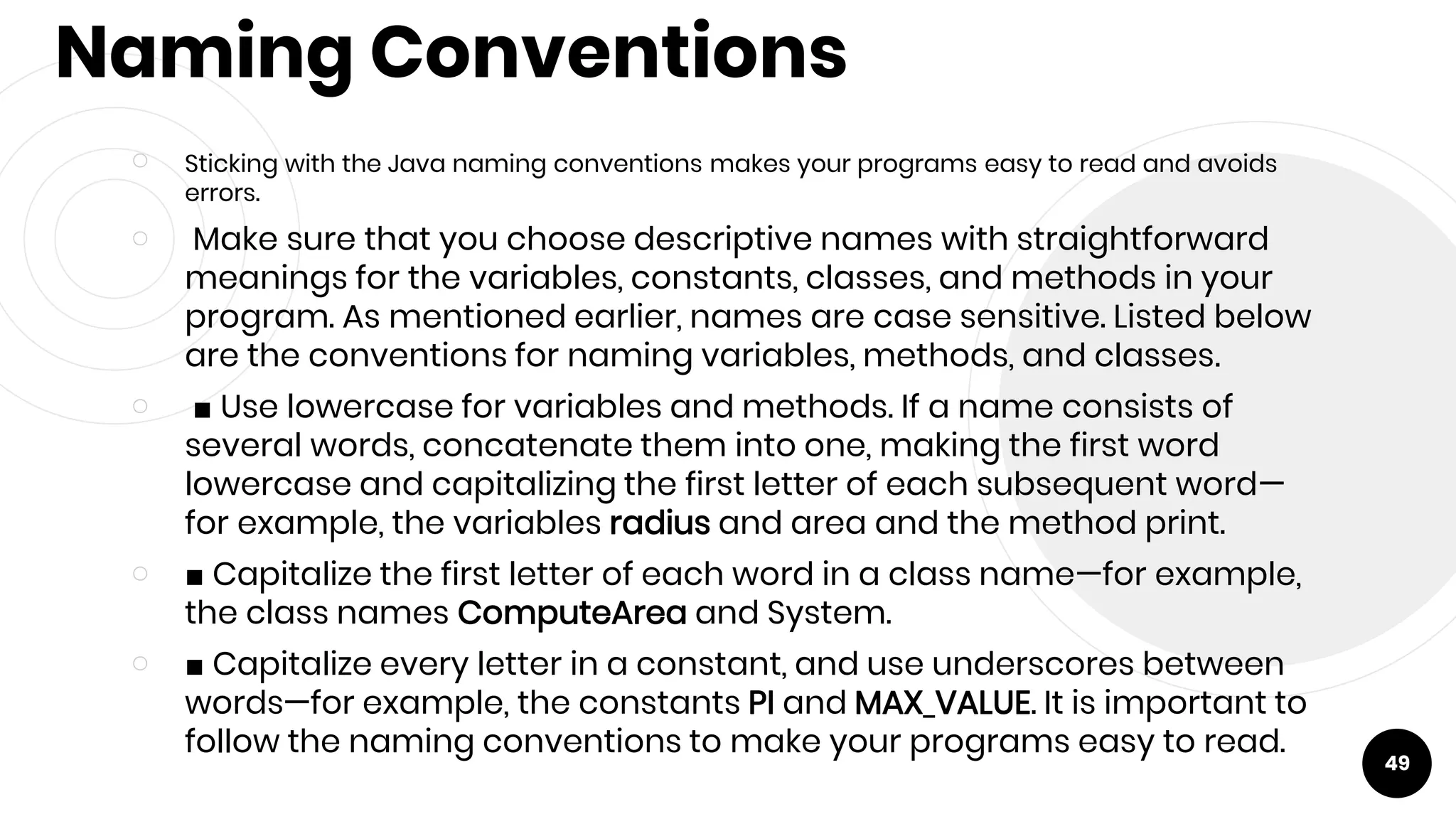
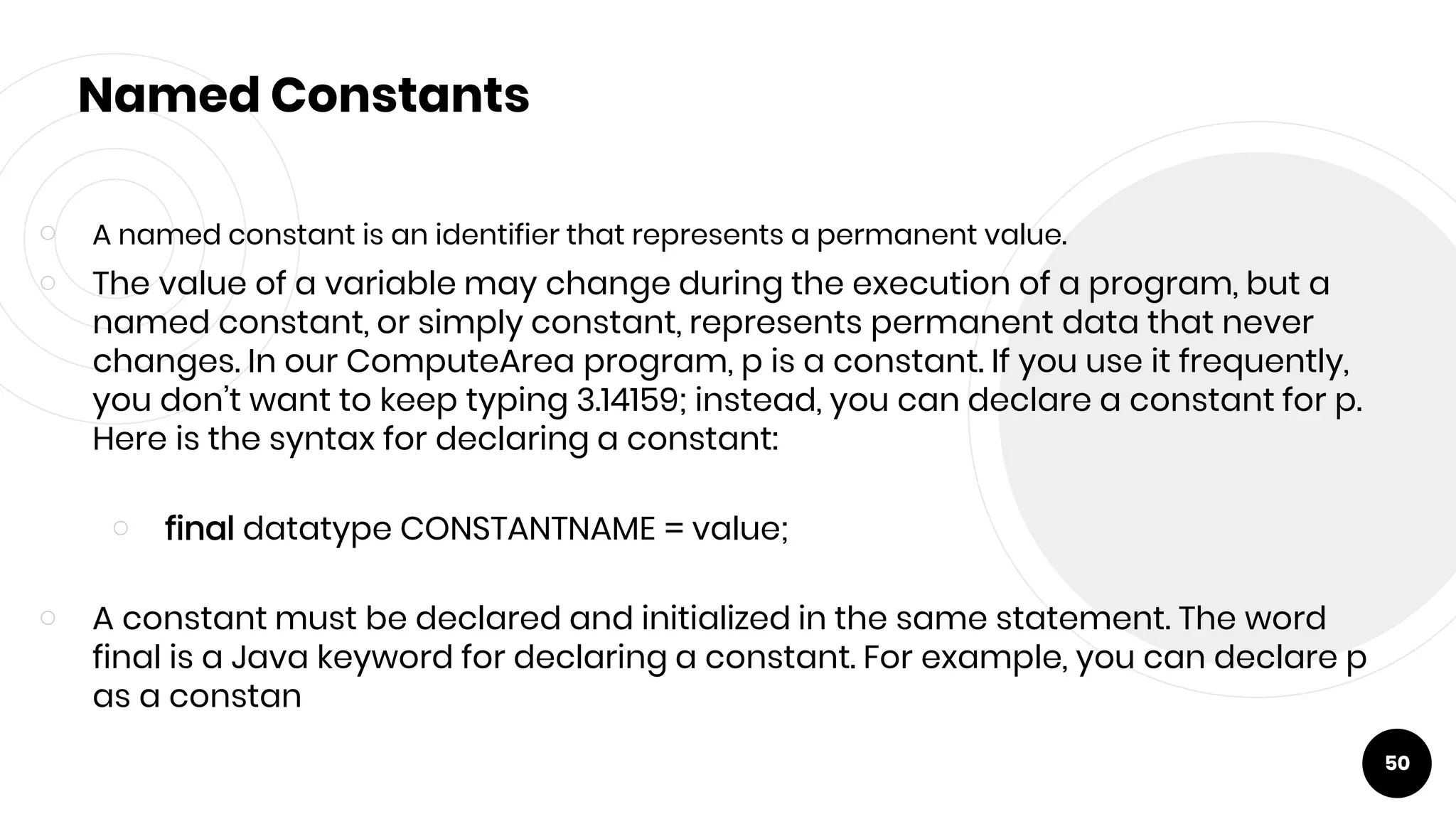
![ComputeAreaWithConstant.java
import java.util.Scanner;
// Scanner is in the java.util package
public class ComputeAreaWithConstant
{ public static void main(String[] args)
{
final double PI = 3.14159;
// Declare a constant // Create a Scanner object
Scanner input = new Scanner(System.in);
// Prompt the user to enter a radius
System.out.print("Enter a number for radius: ");
double radius = input.nextDouble();
// Compute area
double area = radius * radius * PI;
// Display result
System.out.println("The area for the circle of radius " + radius + " is " +
area); } } 51](https://image.slidesharecdn.com/section3-220323160745/75/Intro-to-programing-with-java-lecture-3-51-2048.jpg)
![import java.util.Scanner;
public class Gasstation {
public static void main(String[] args) {
final byte pumpprice80=5;
final byte pumpprice92=7;
final byte pumpprice95=8;
Scanner input =new Scanner(System.in);
System.out.print("Enter the pumpnumber:");
byte pumpnumber=input.nextByte();
if(pumpnumber==80)
{
System.out.print("Enter the number of gasliters:");
float gasliters=input.nextFloat();
float totalcost=gasliters*pumpprice80;
System.out.println("The total cost is :"+totalcost);
}
52](https://image.slidesharecdn.com/section3-220323160745/75/Intro-to-programing-with-java-lecture-3-52-2048.jpg)
